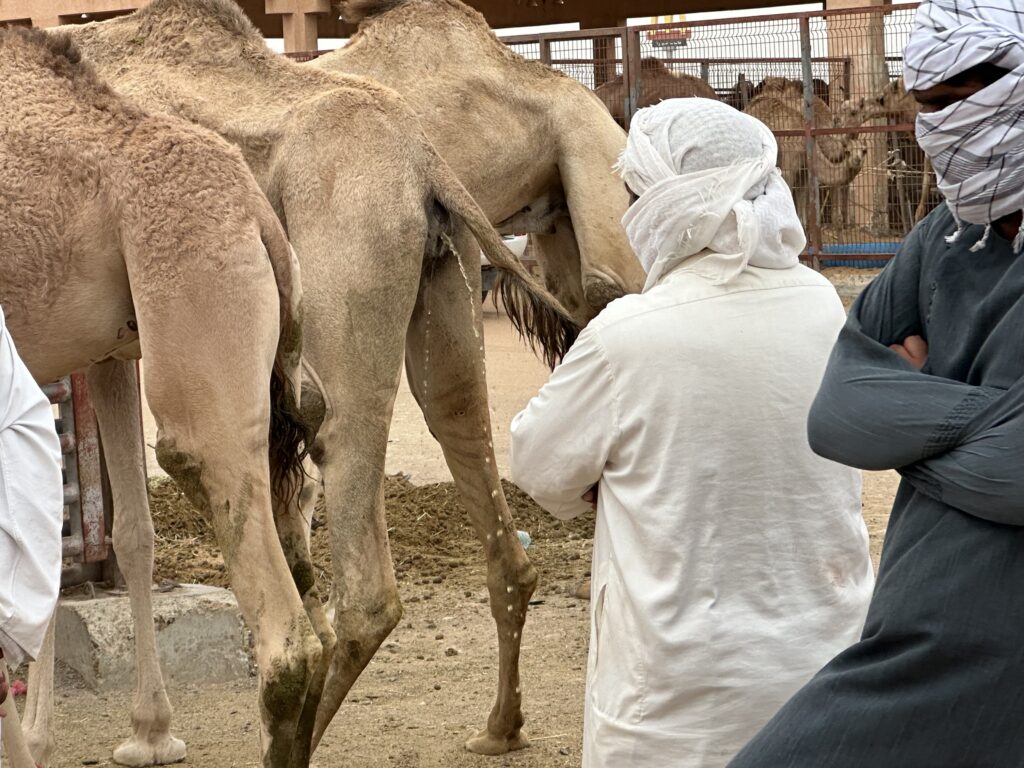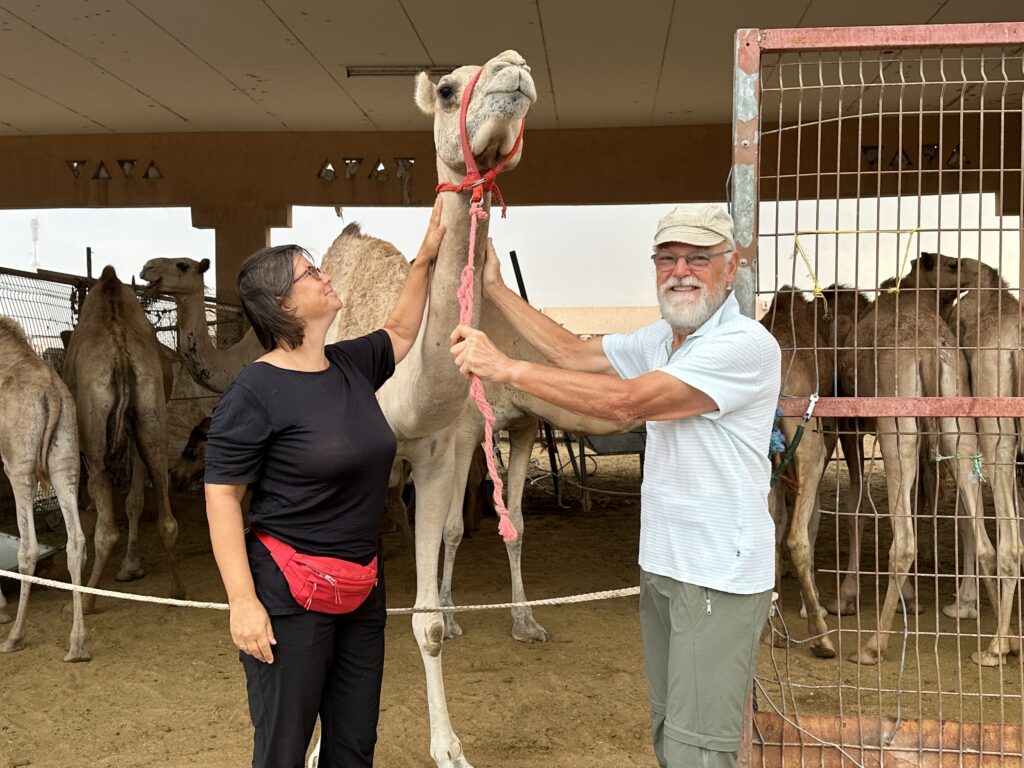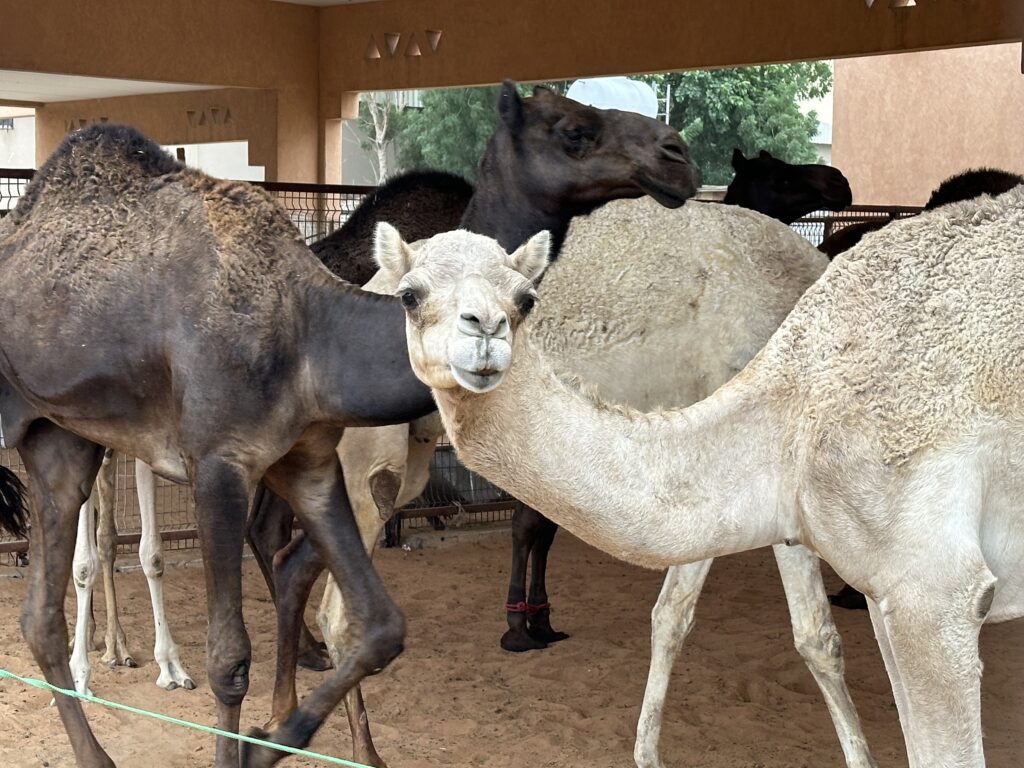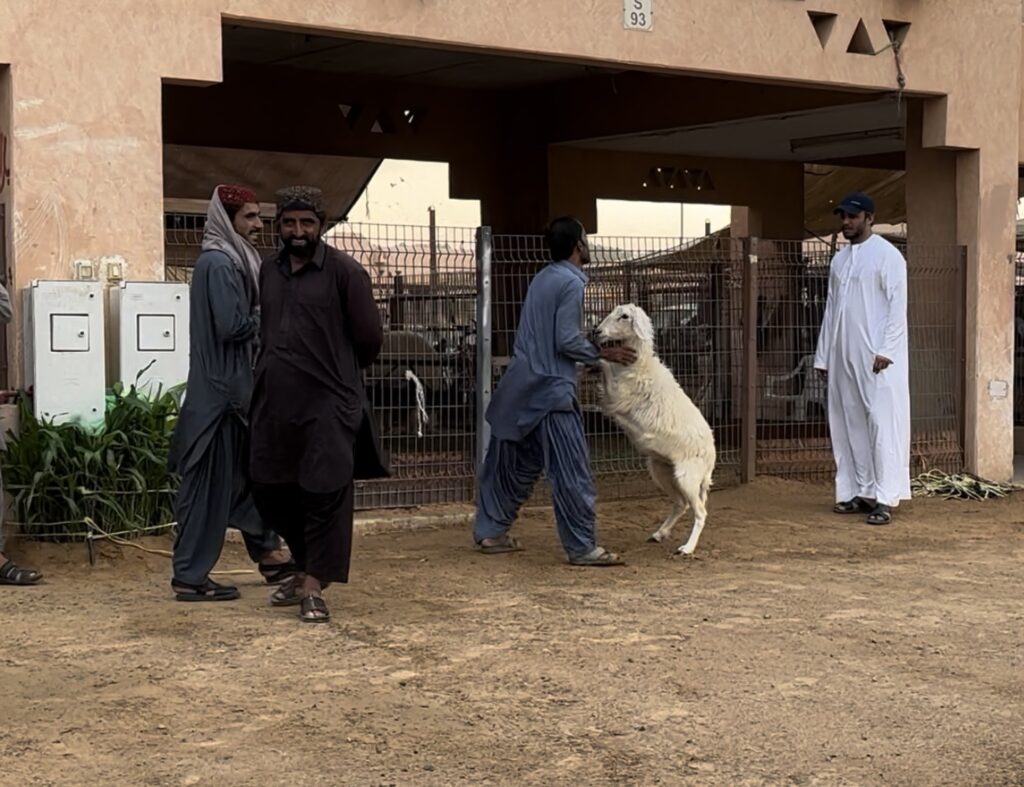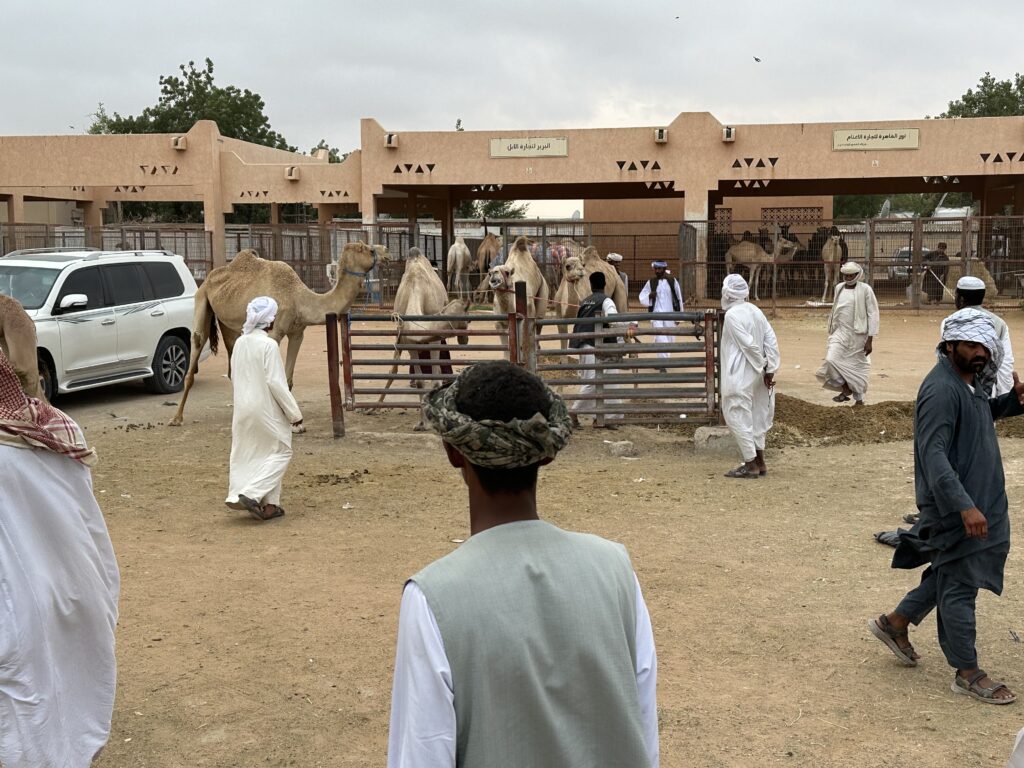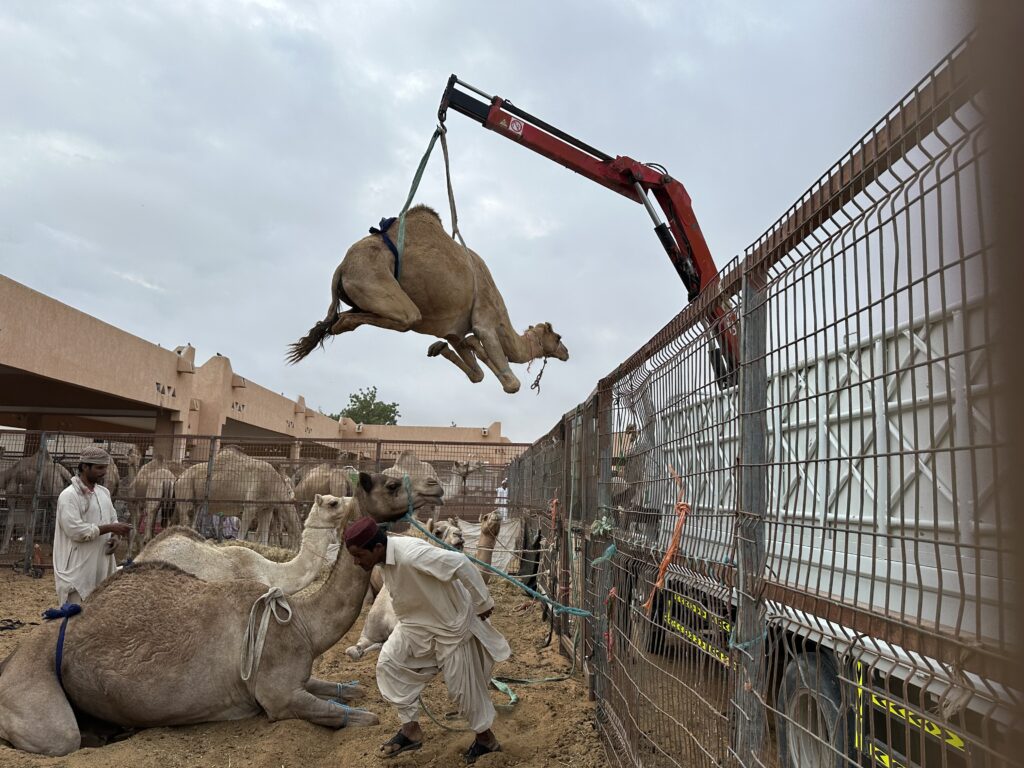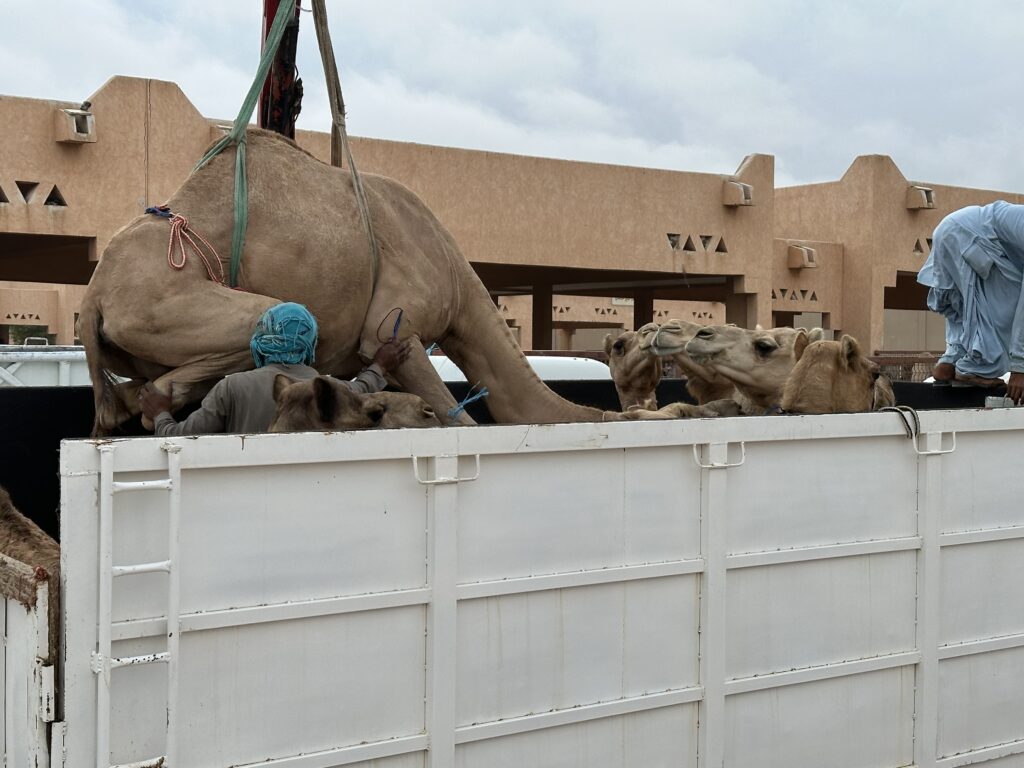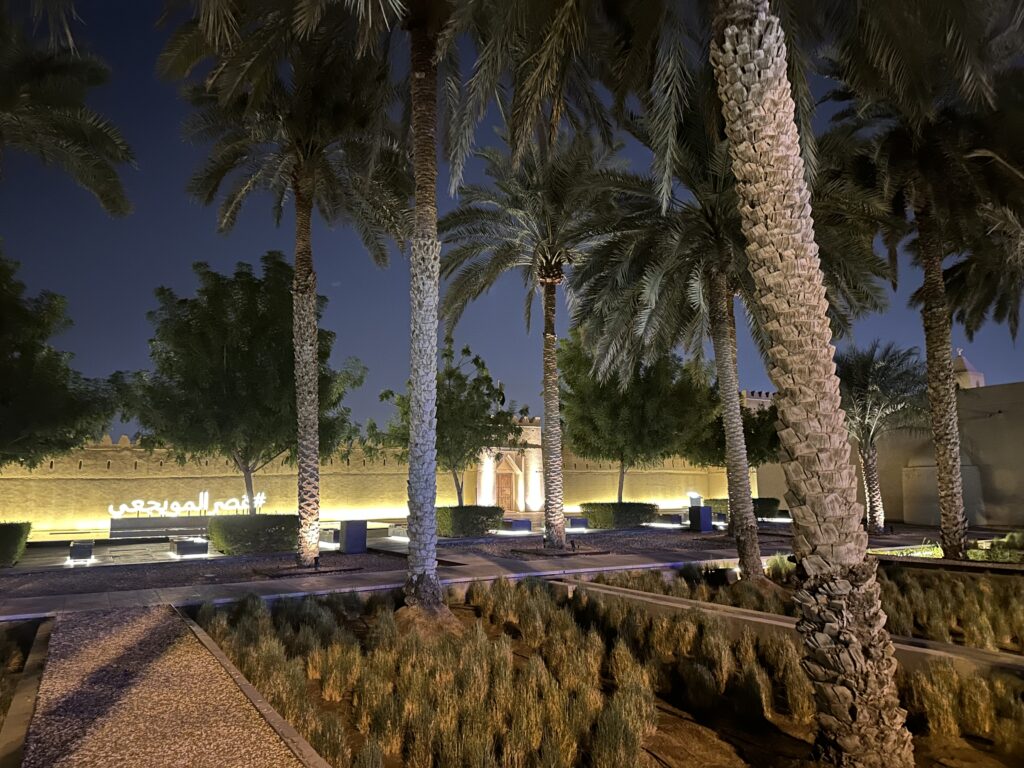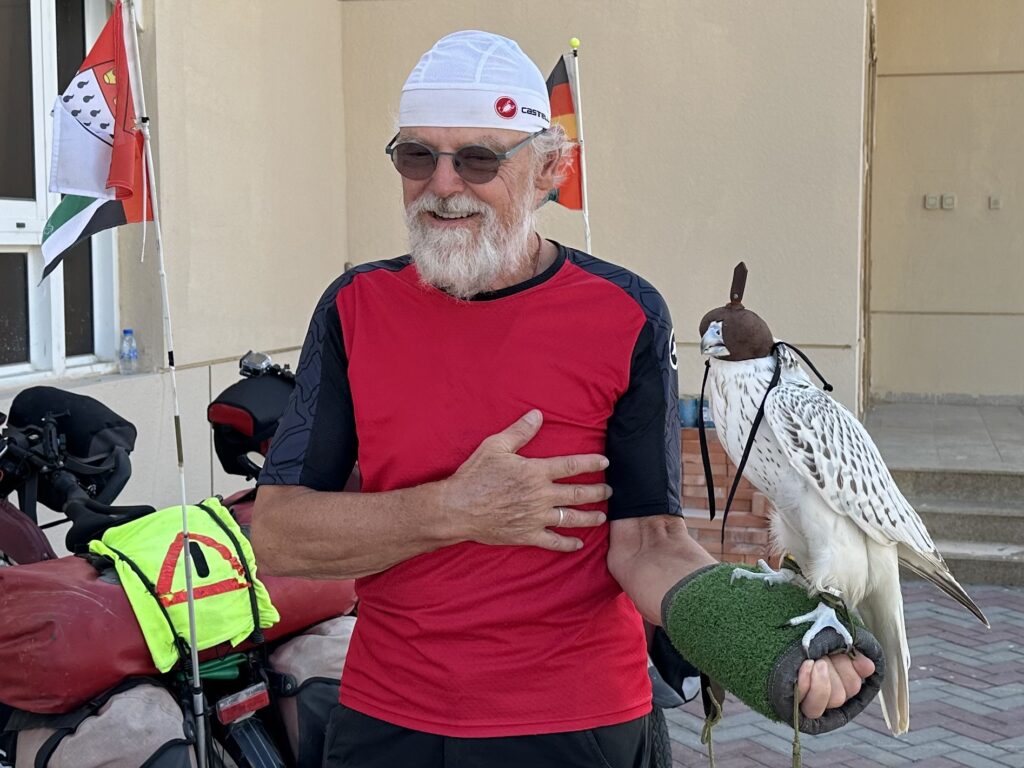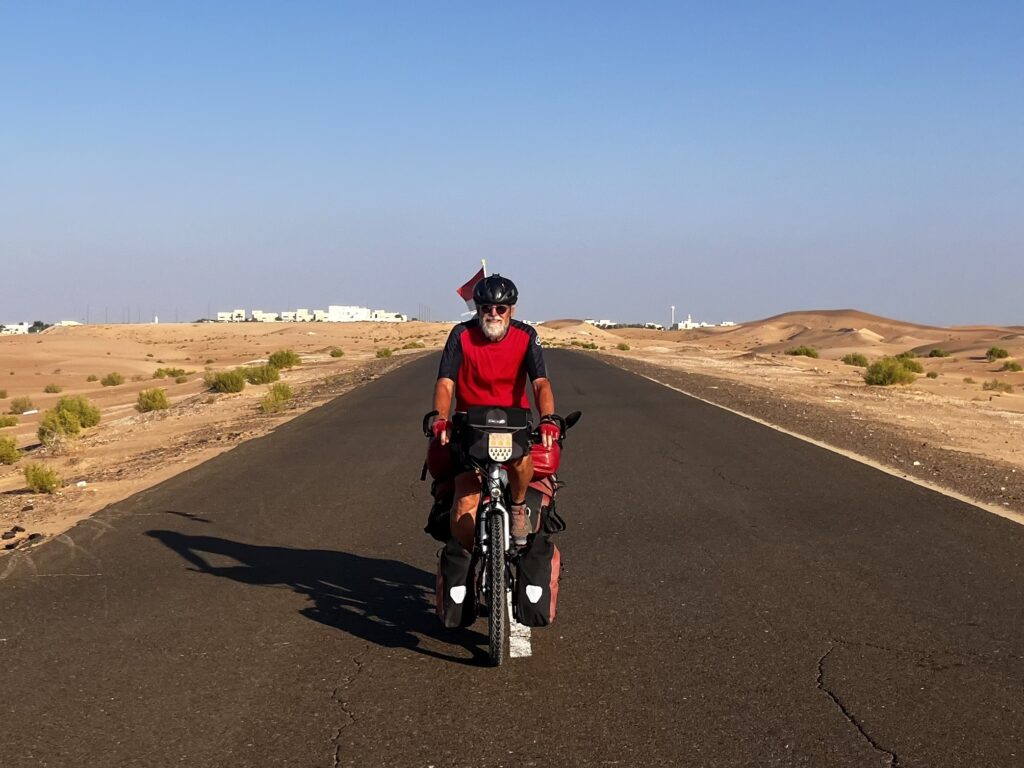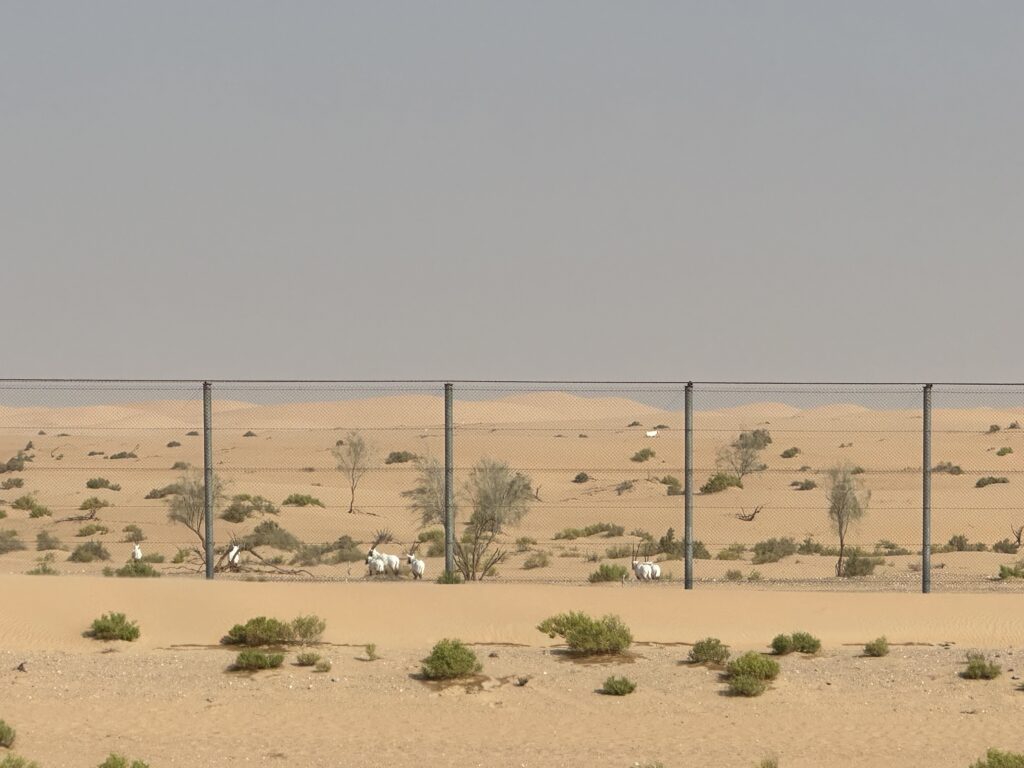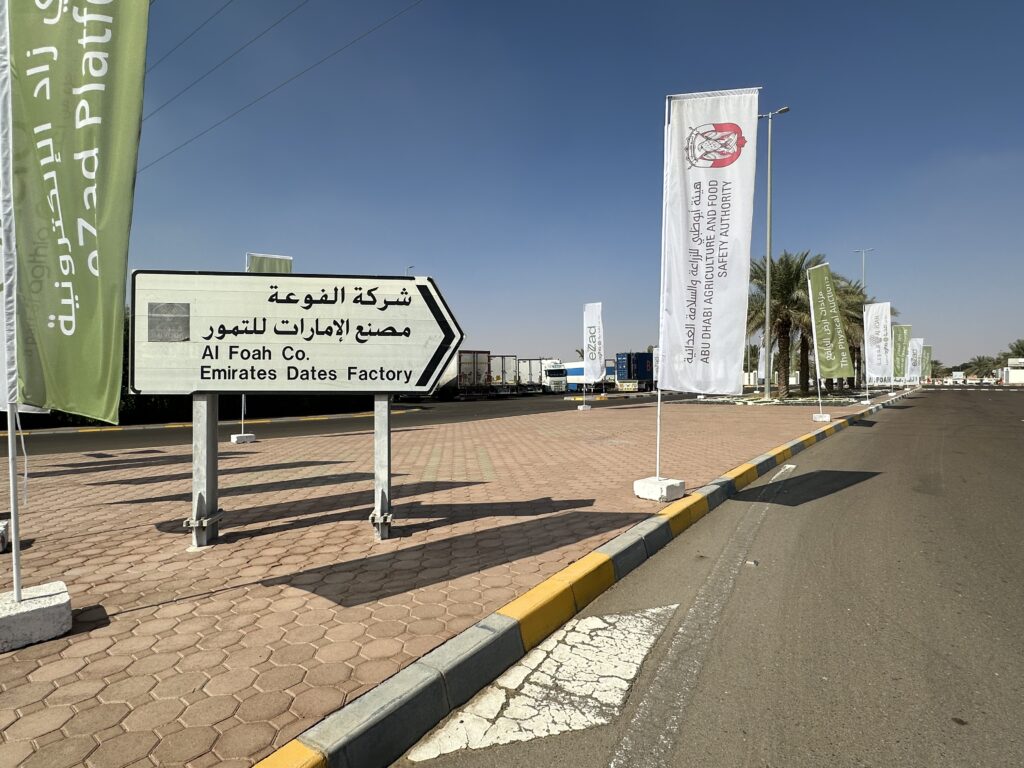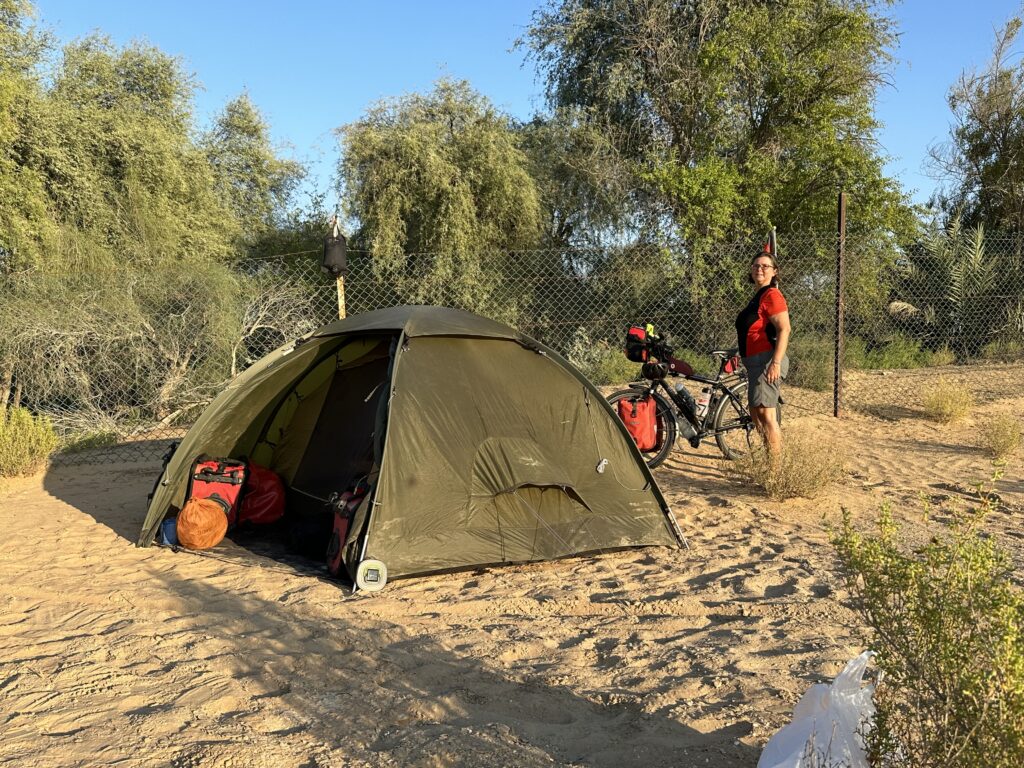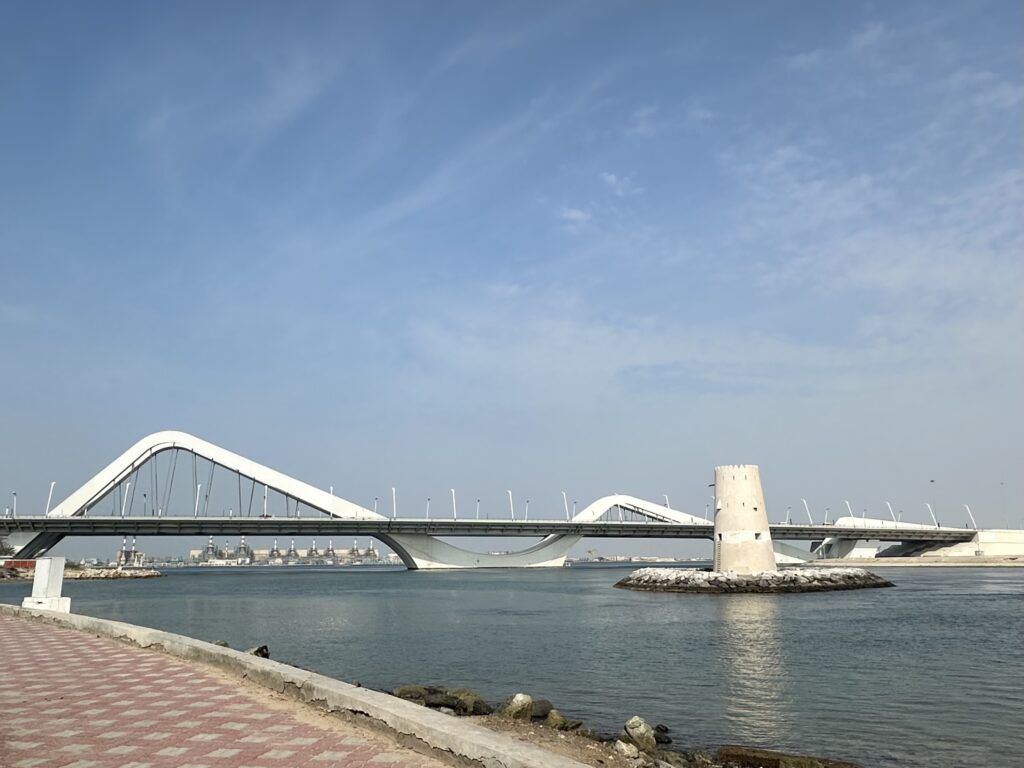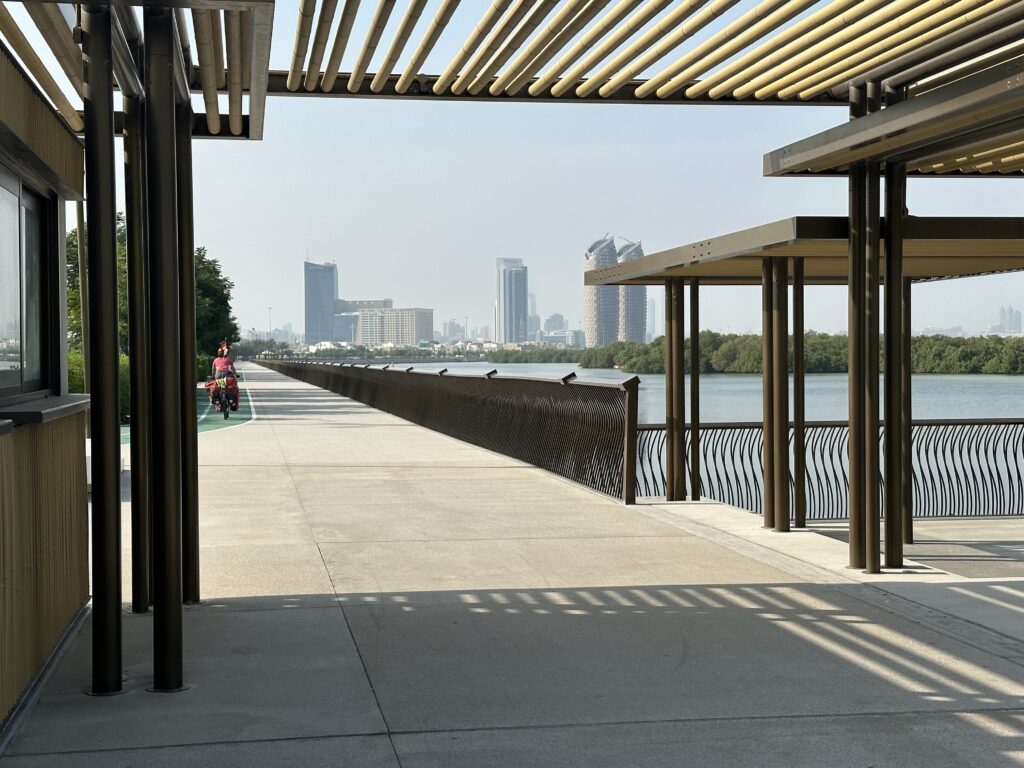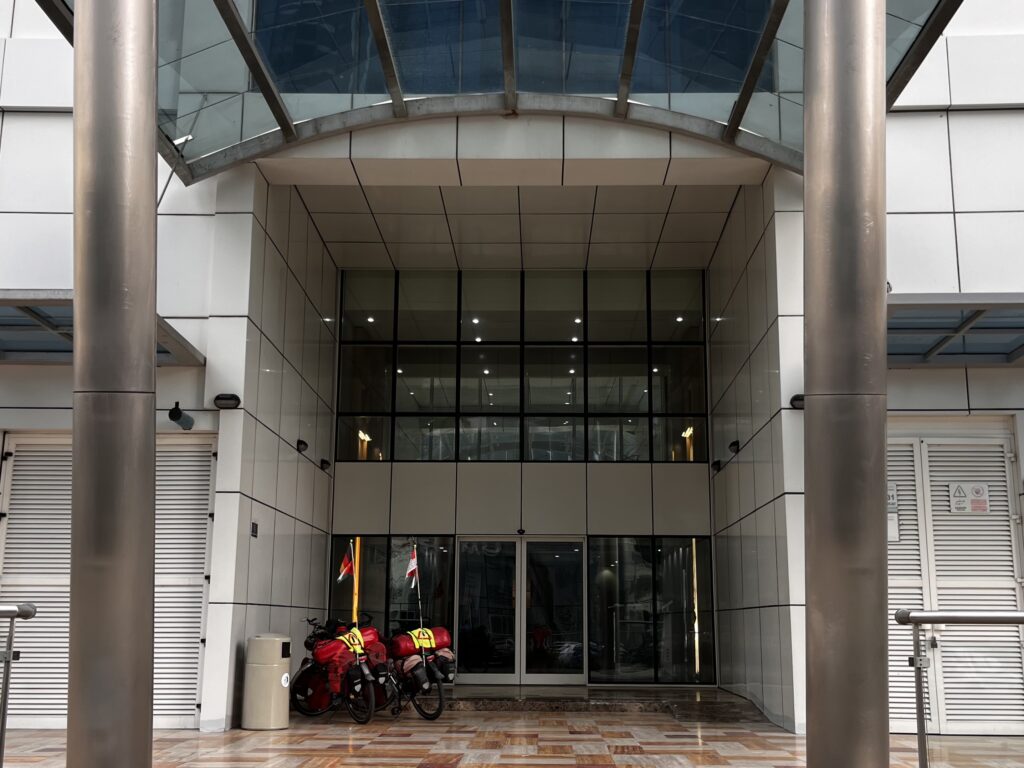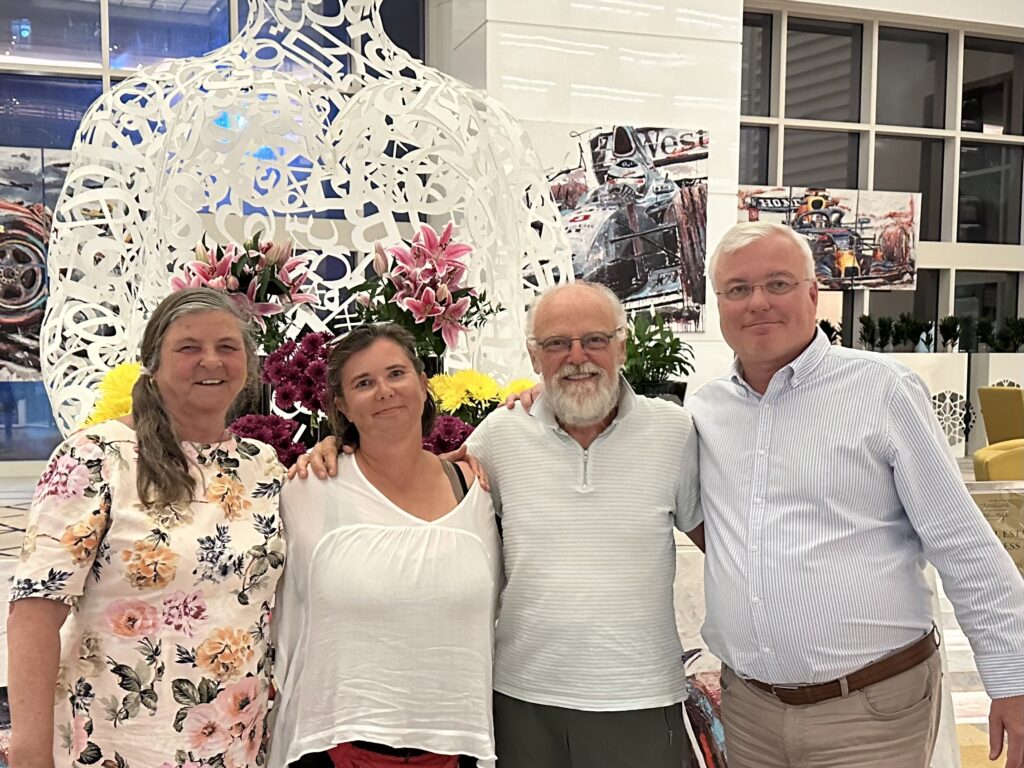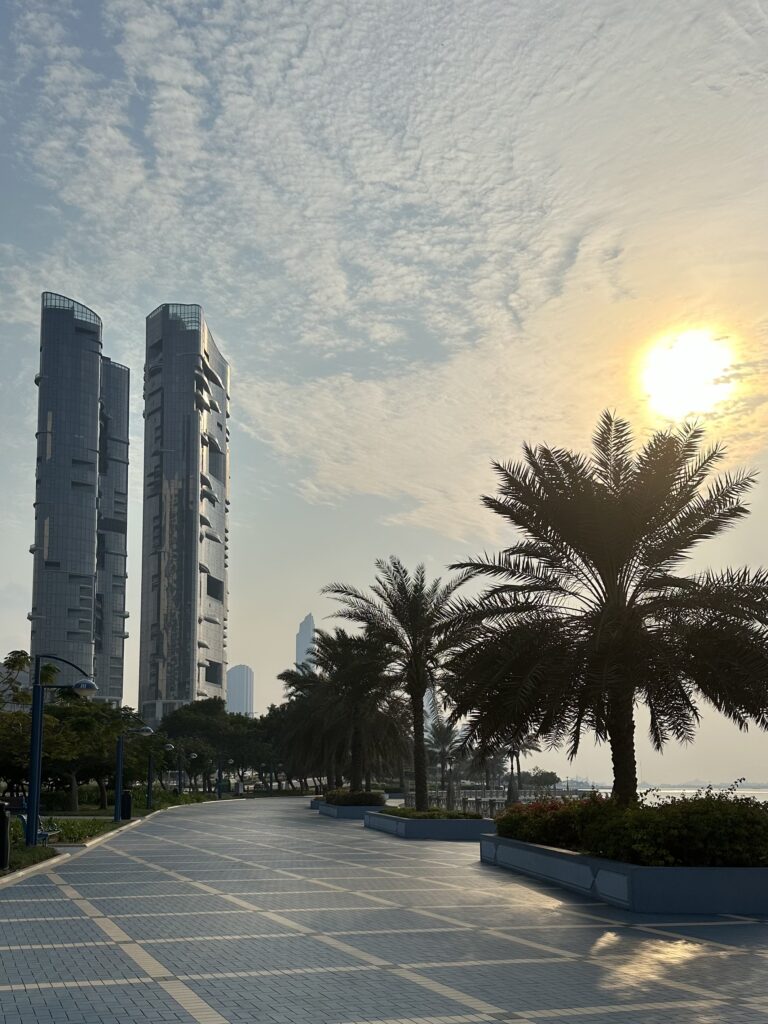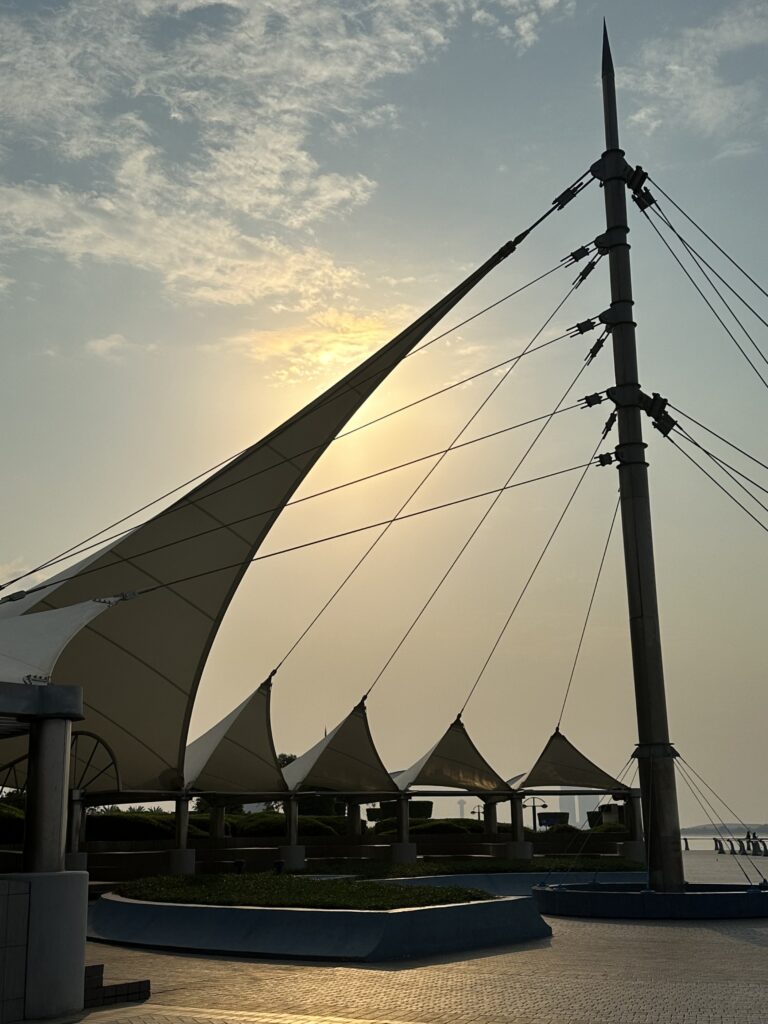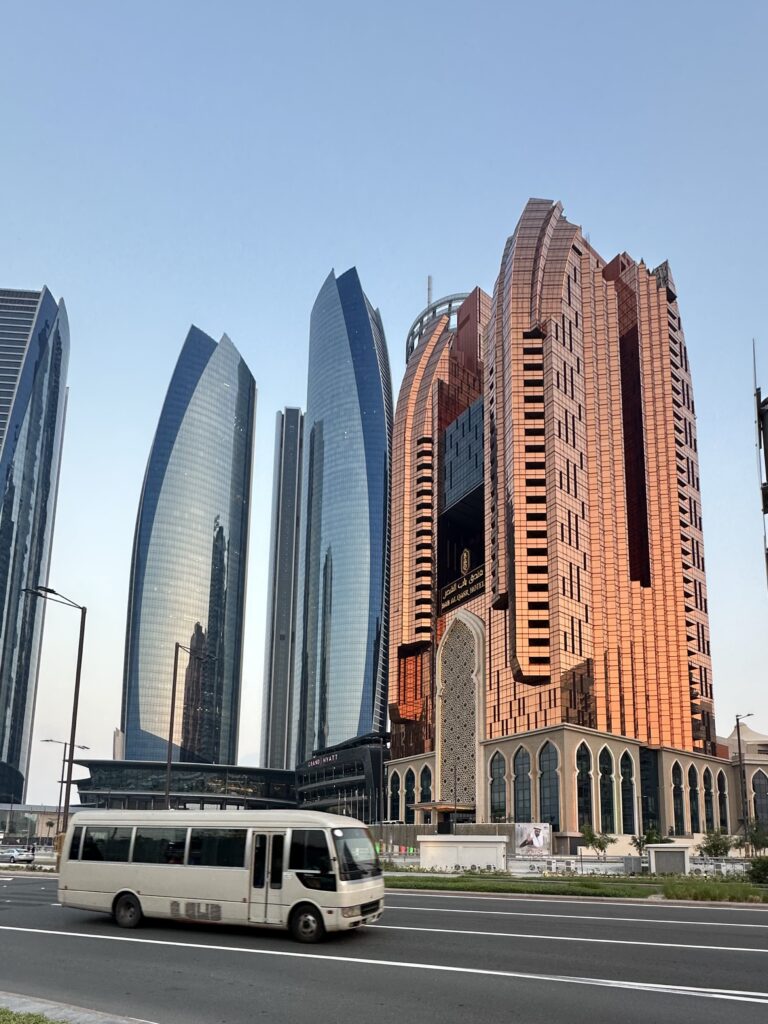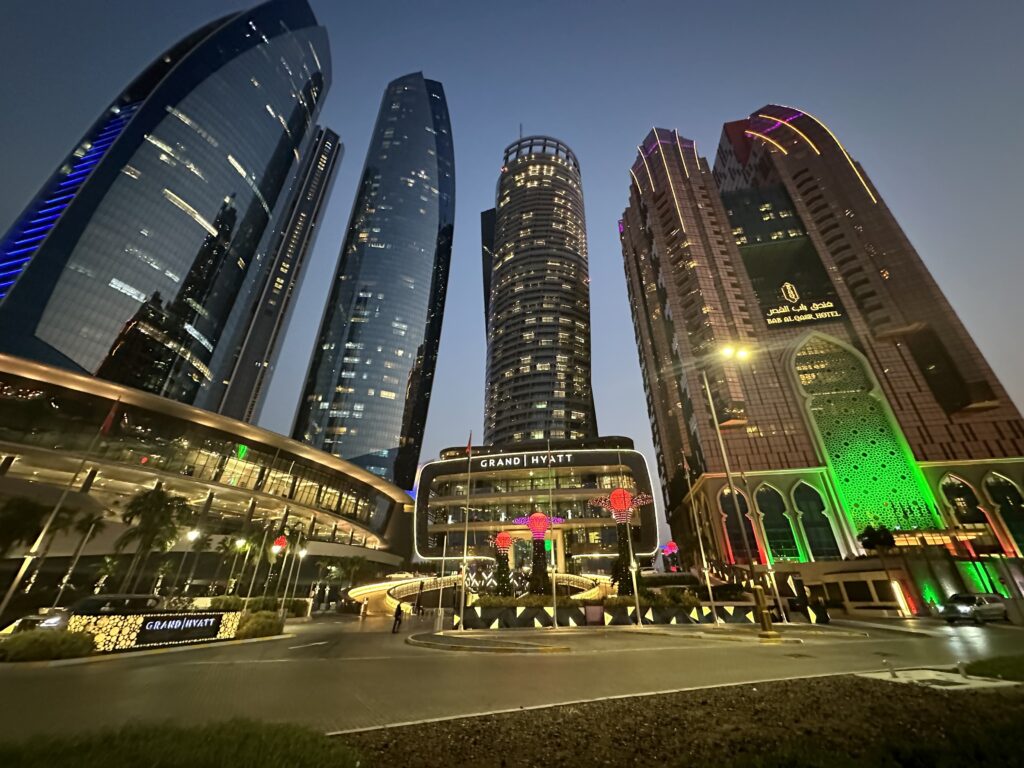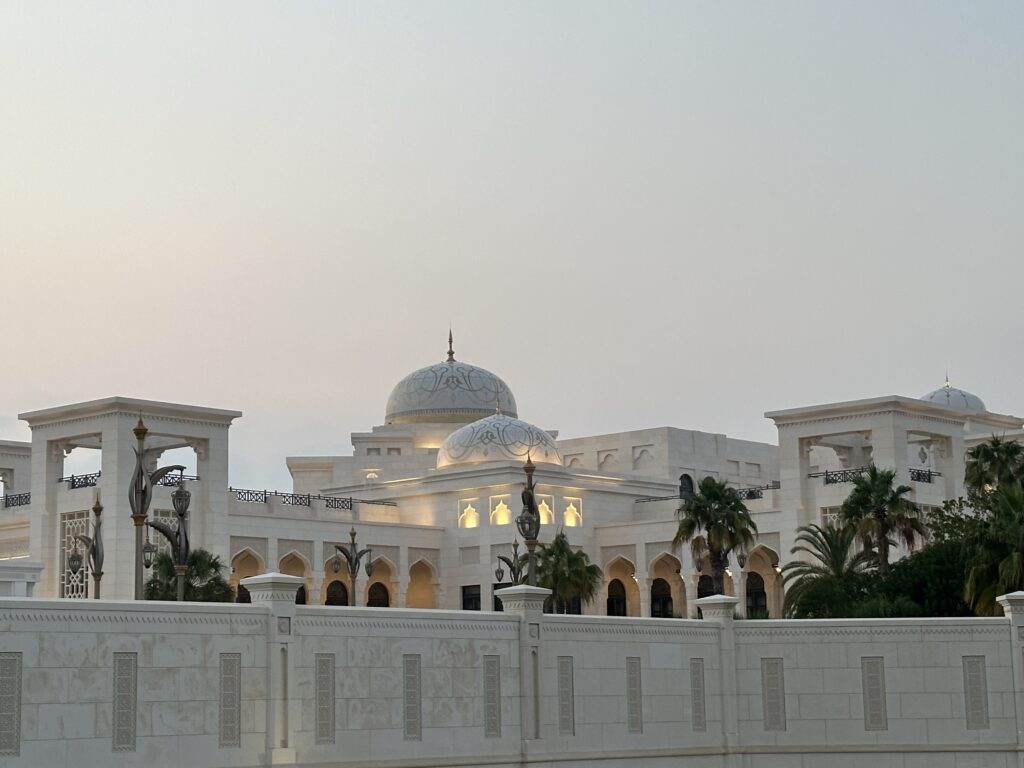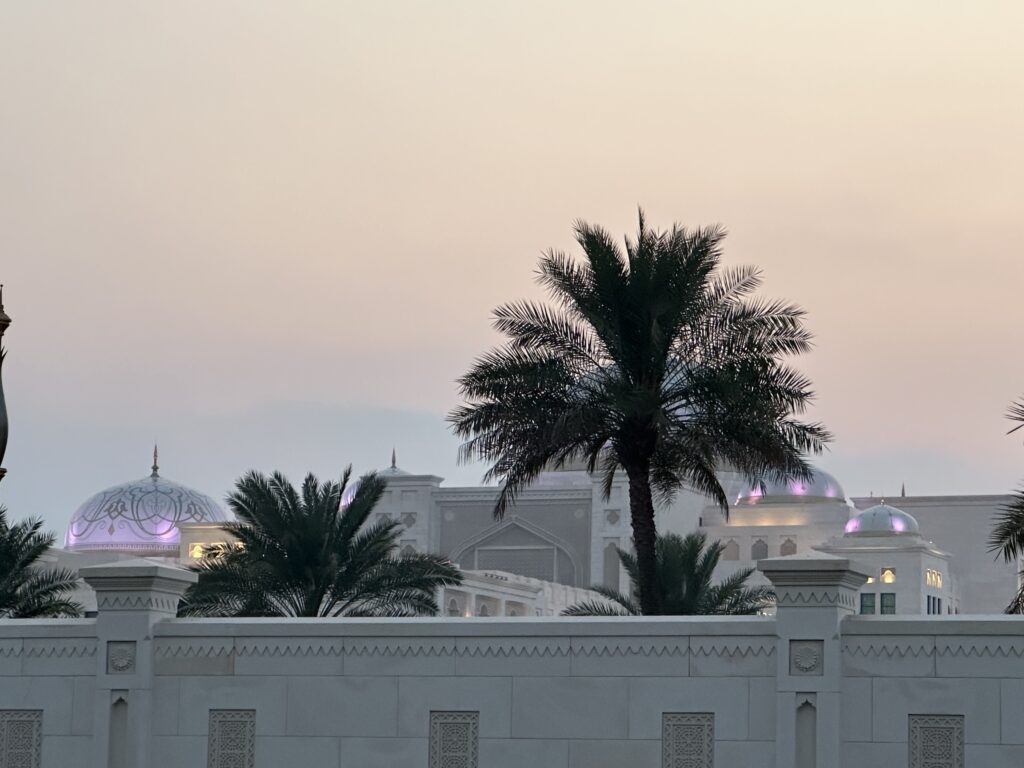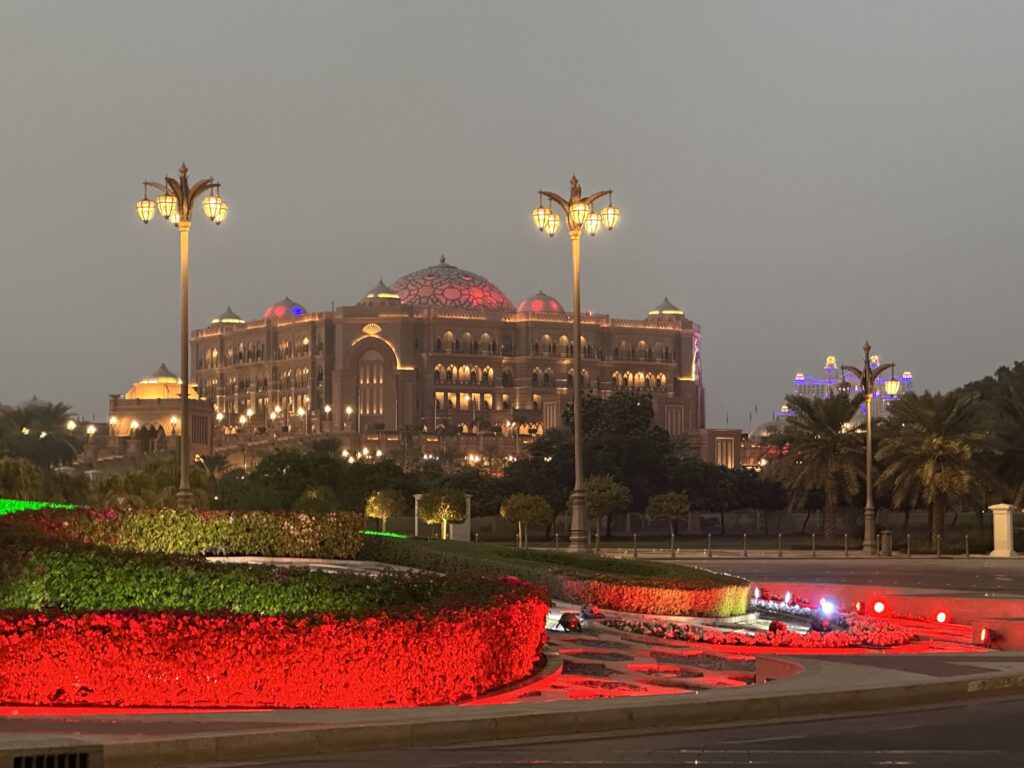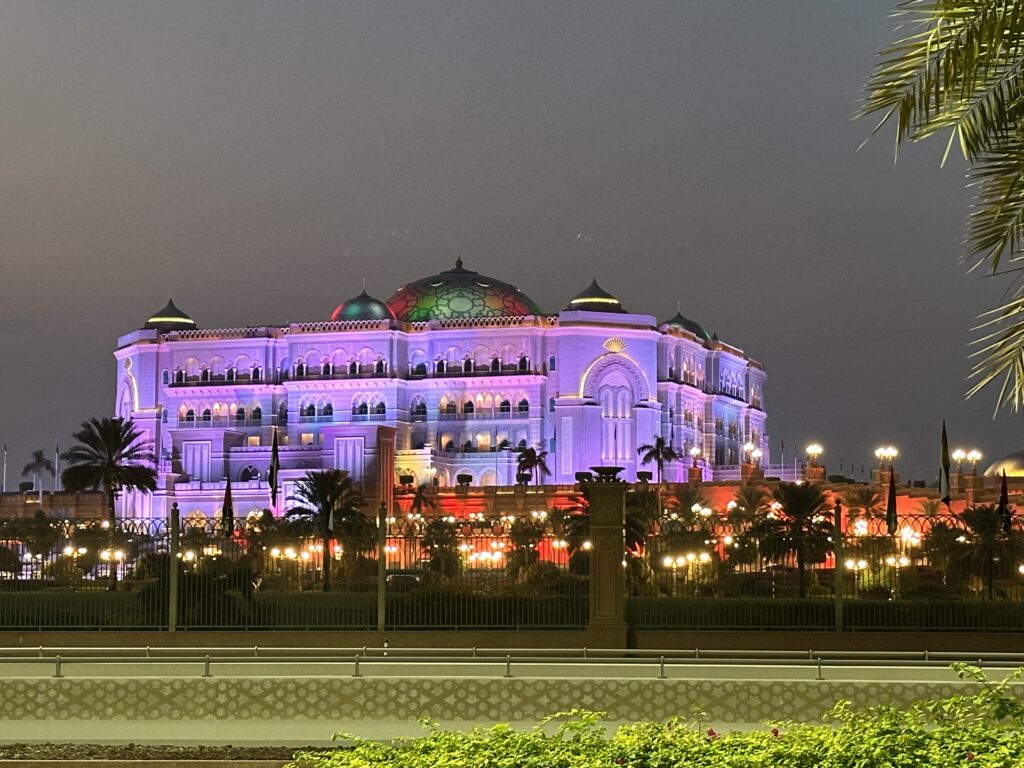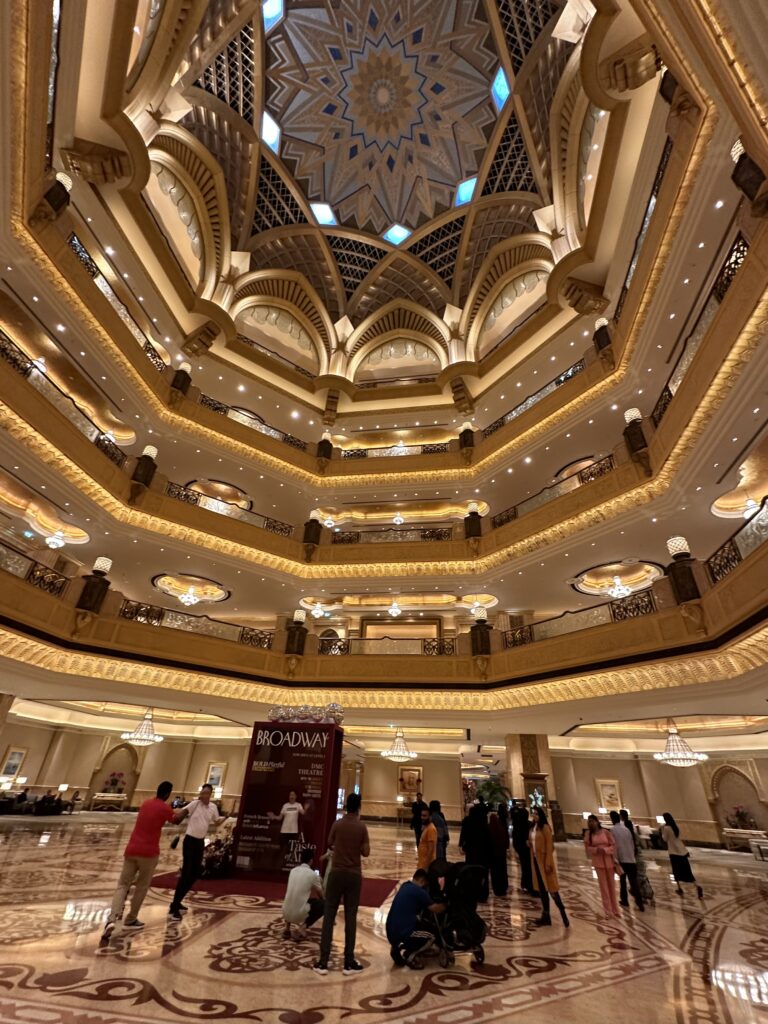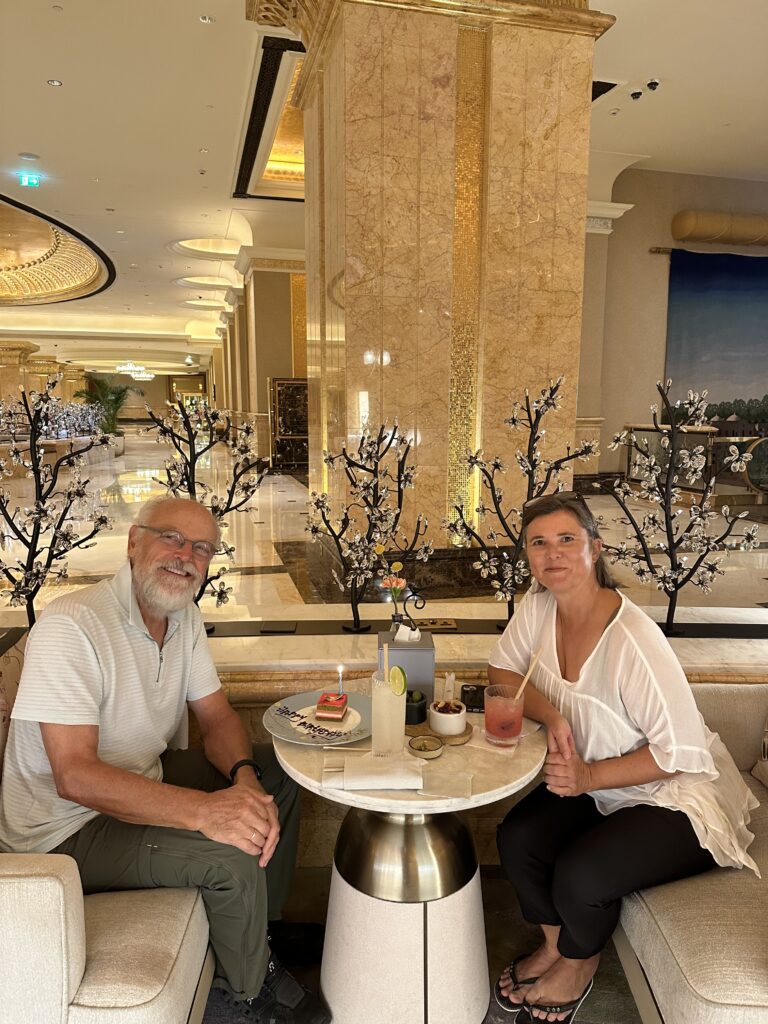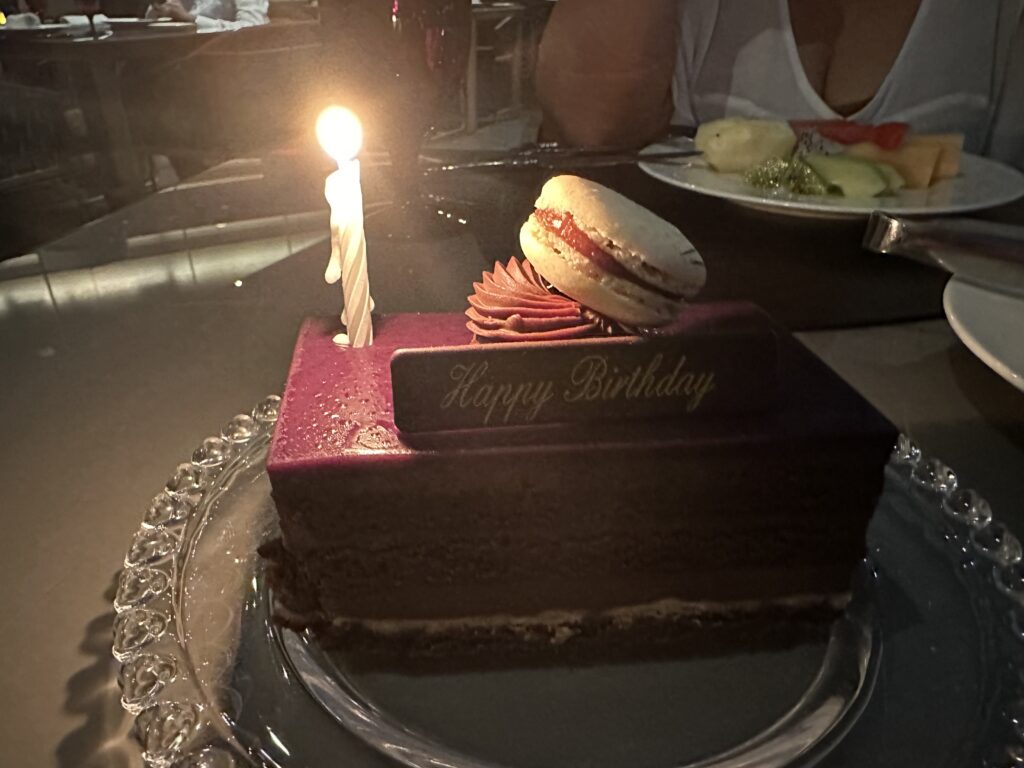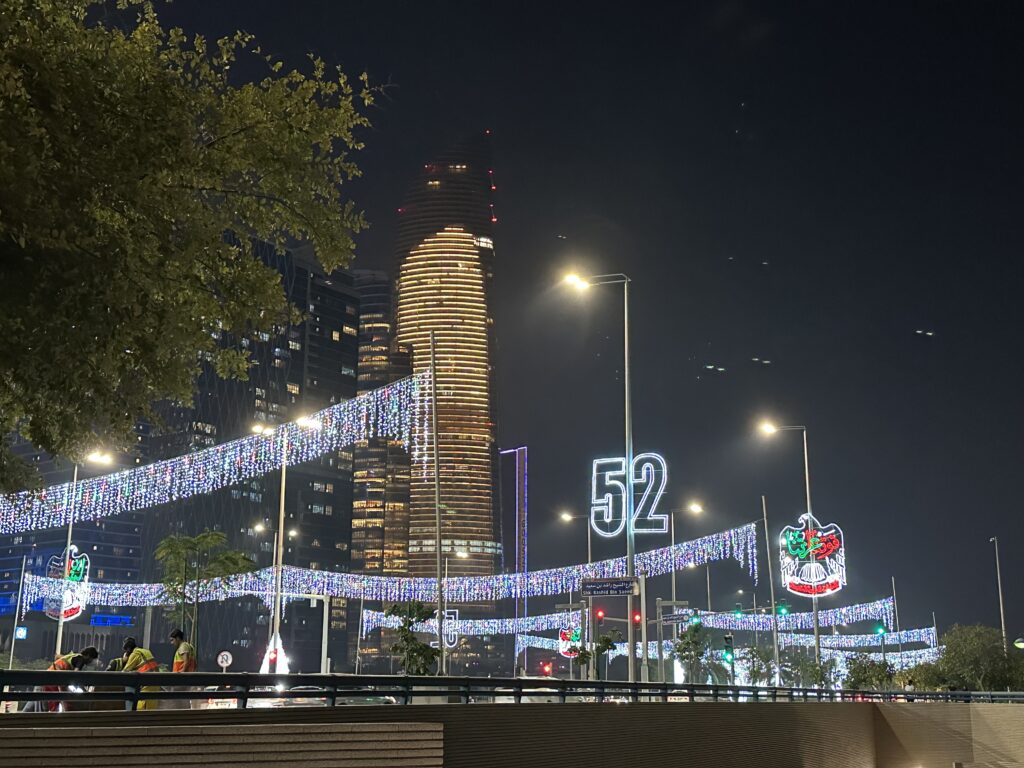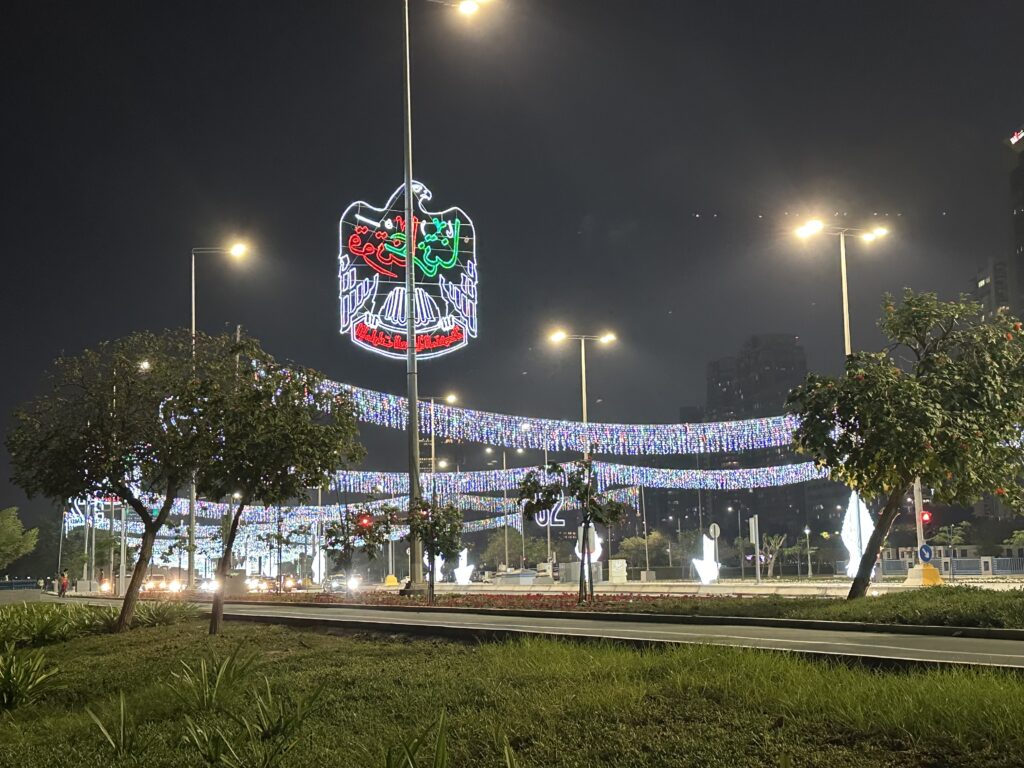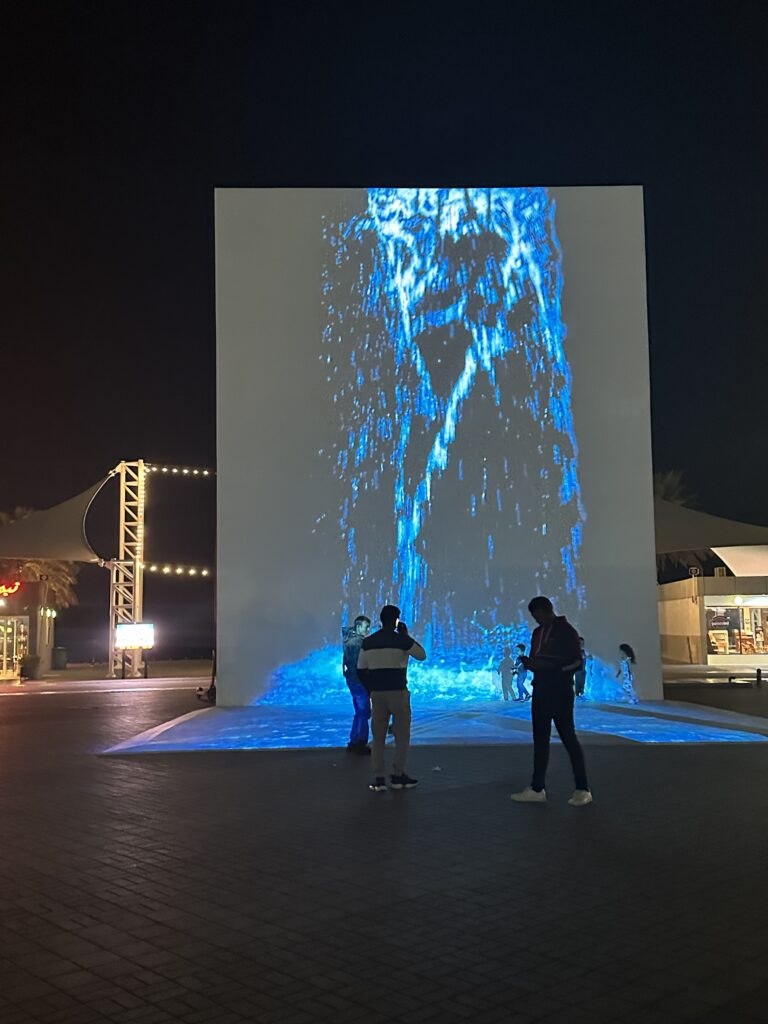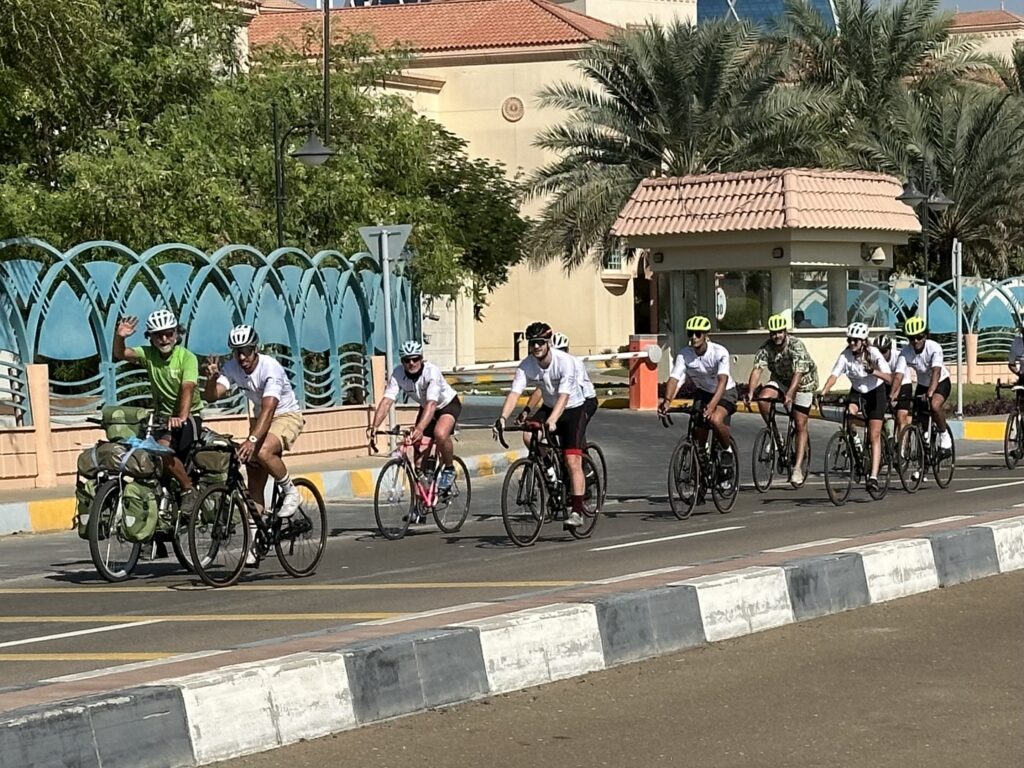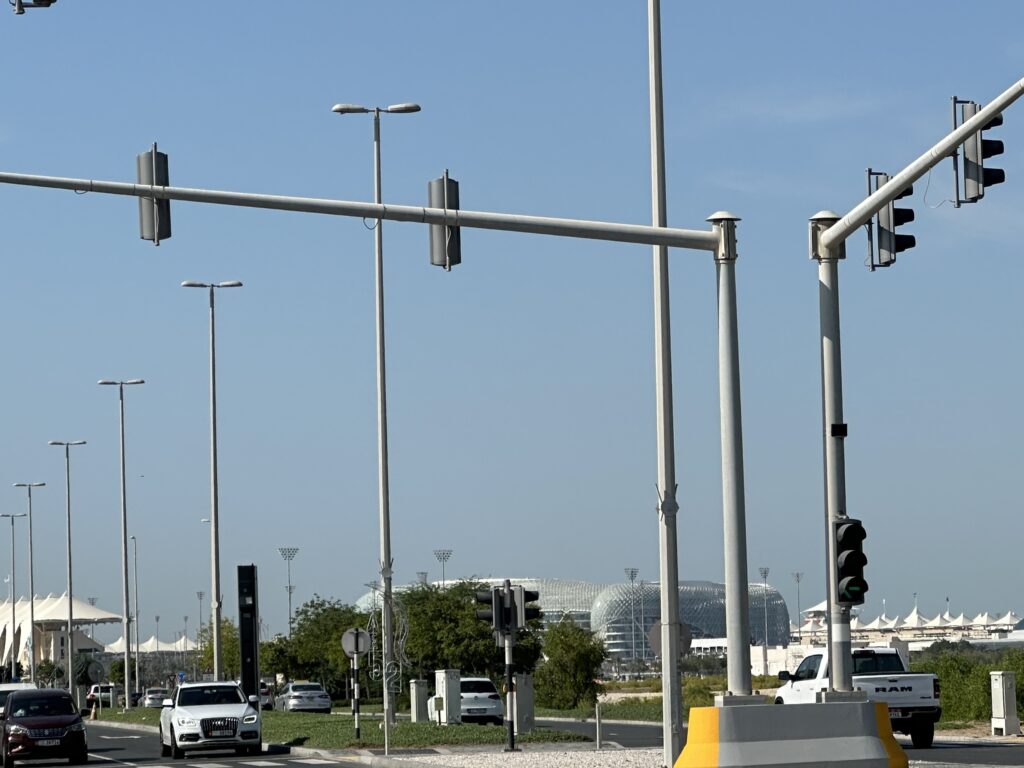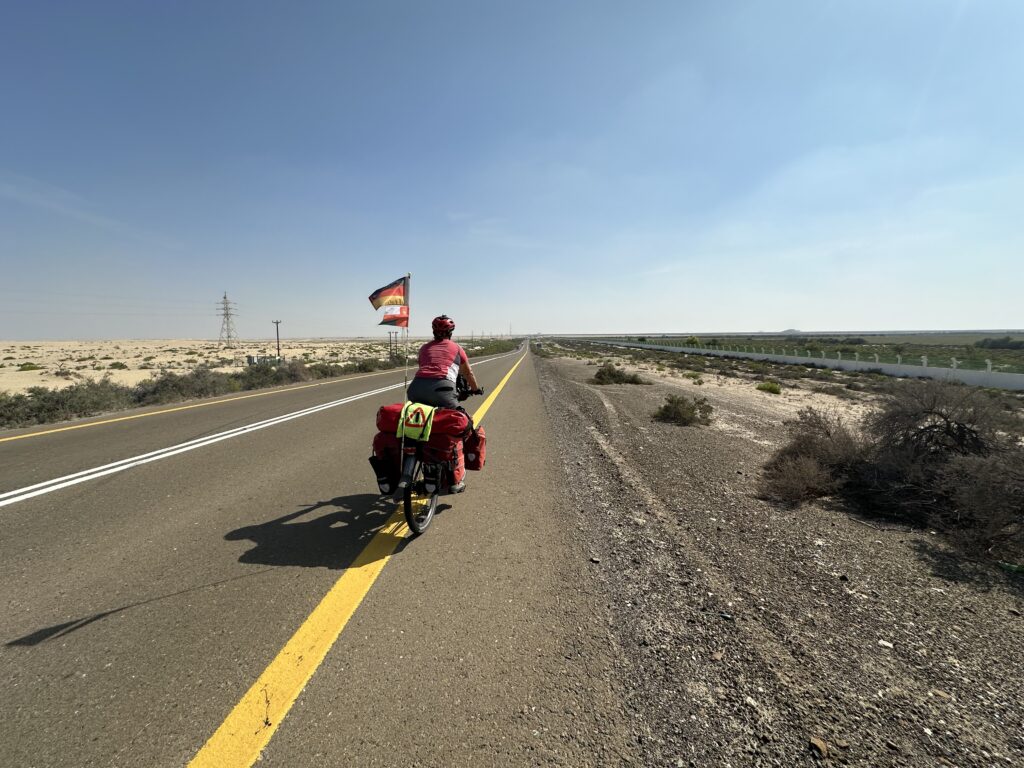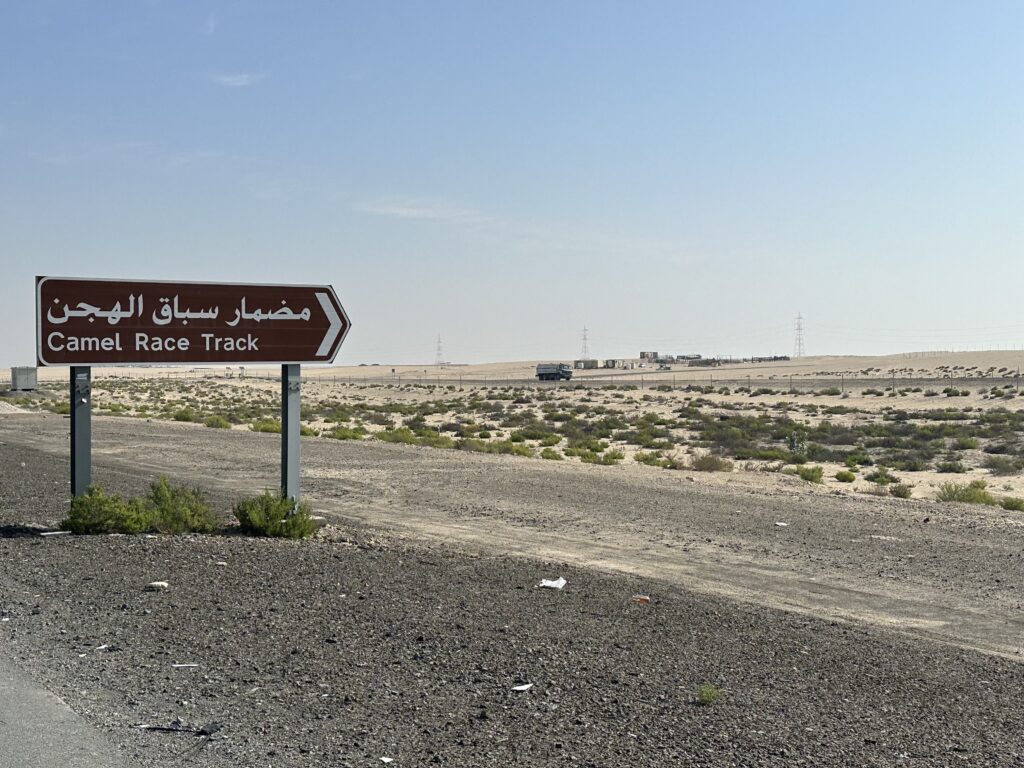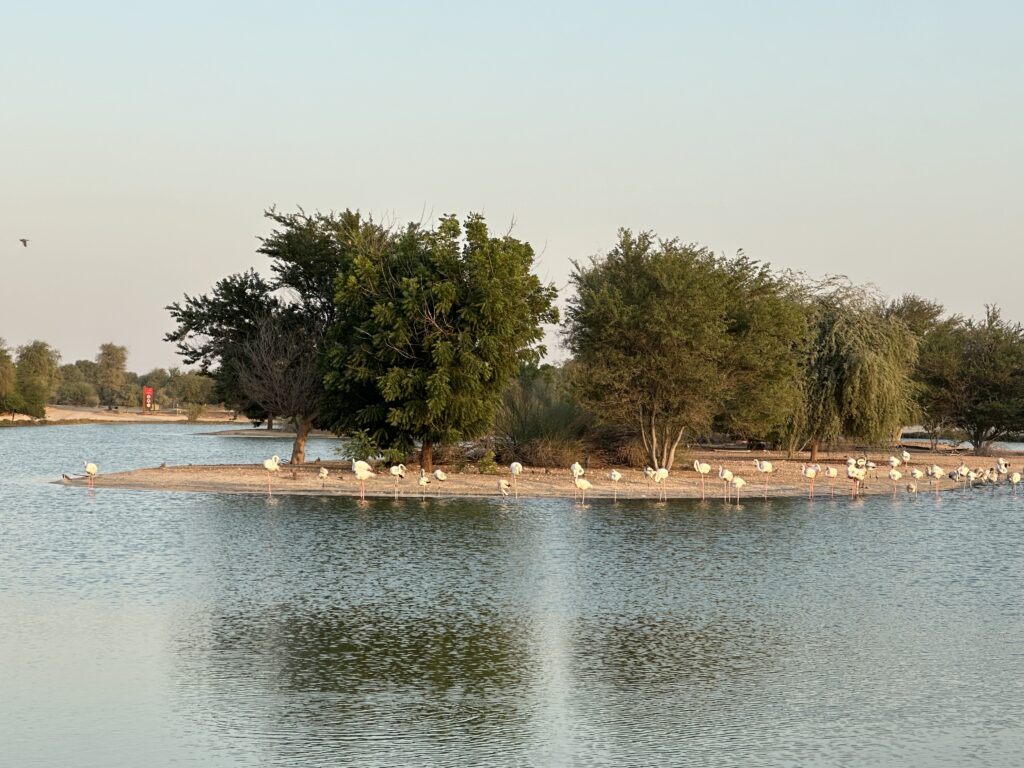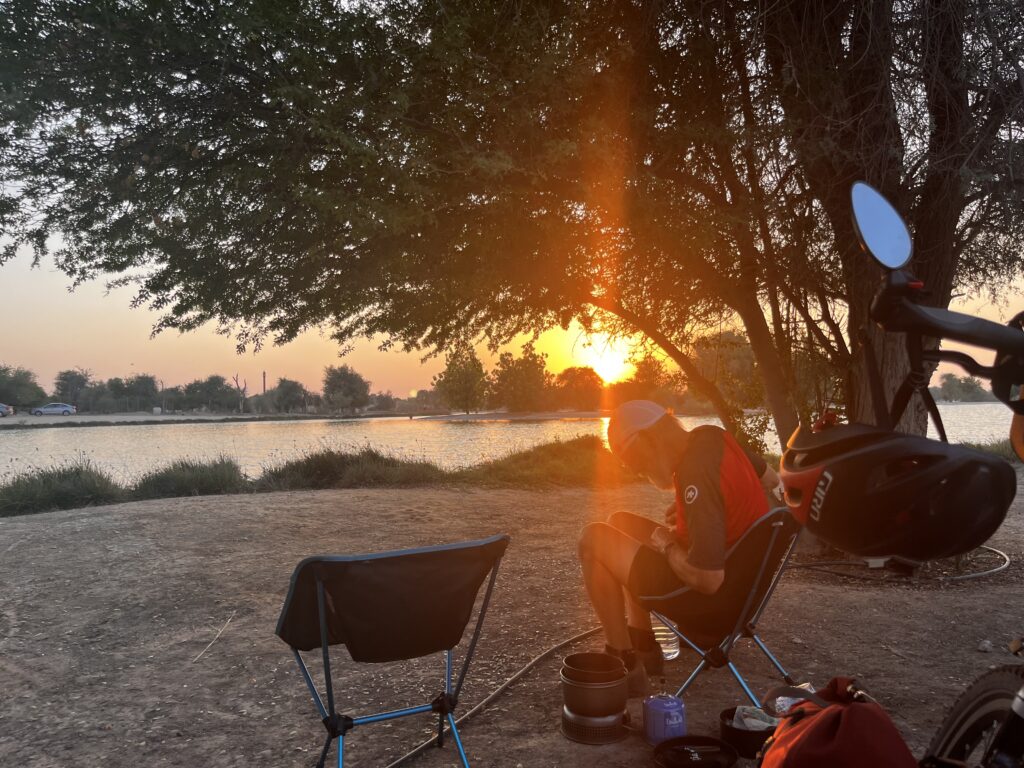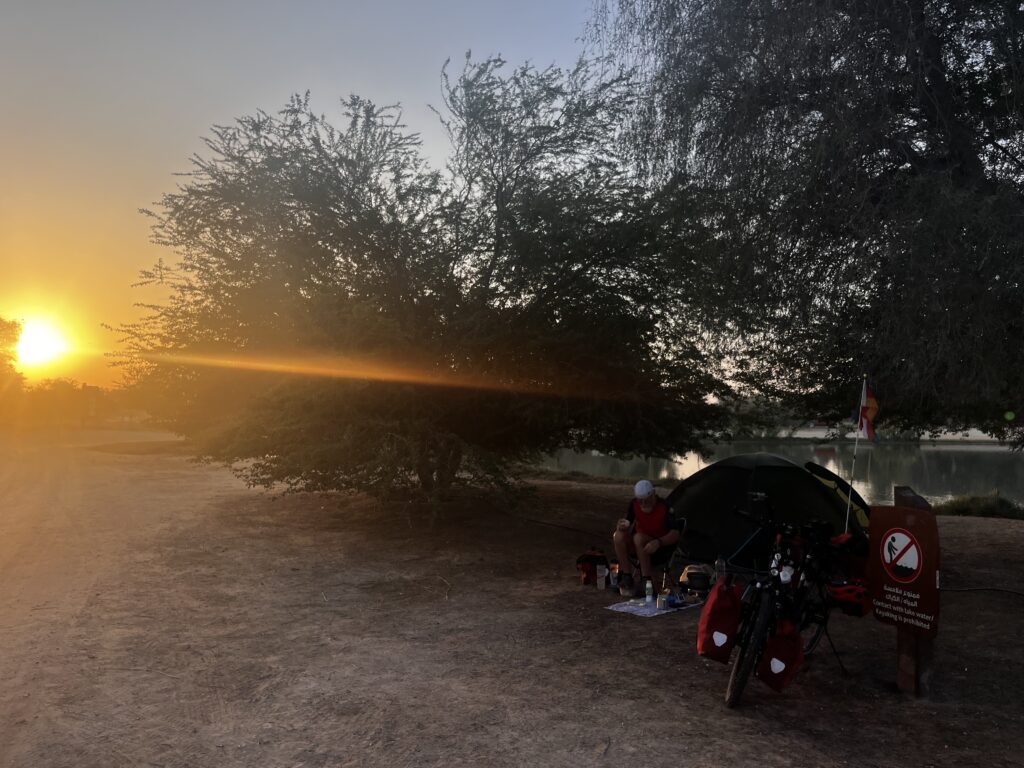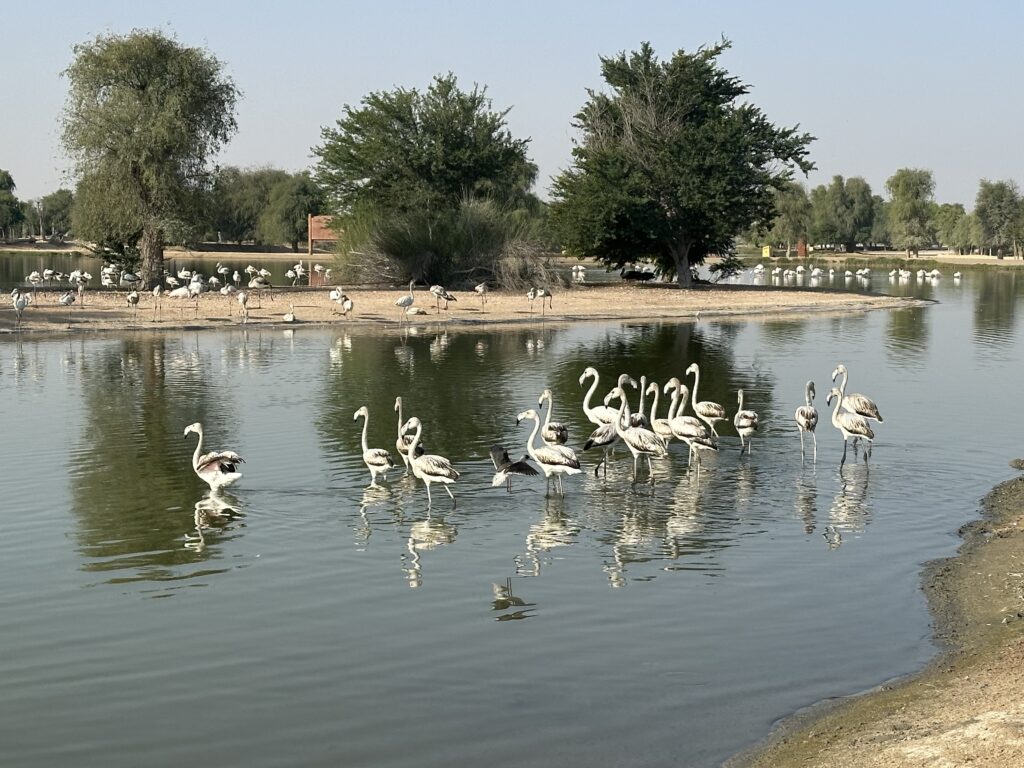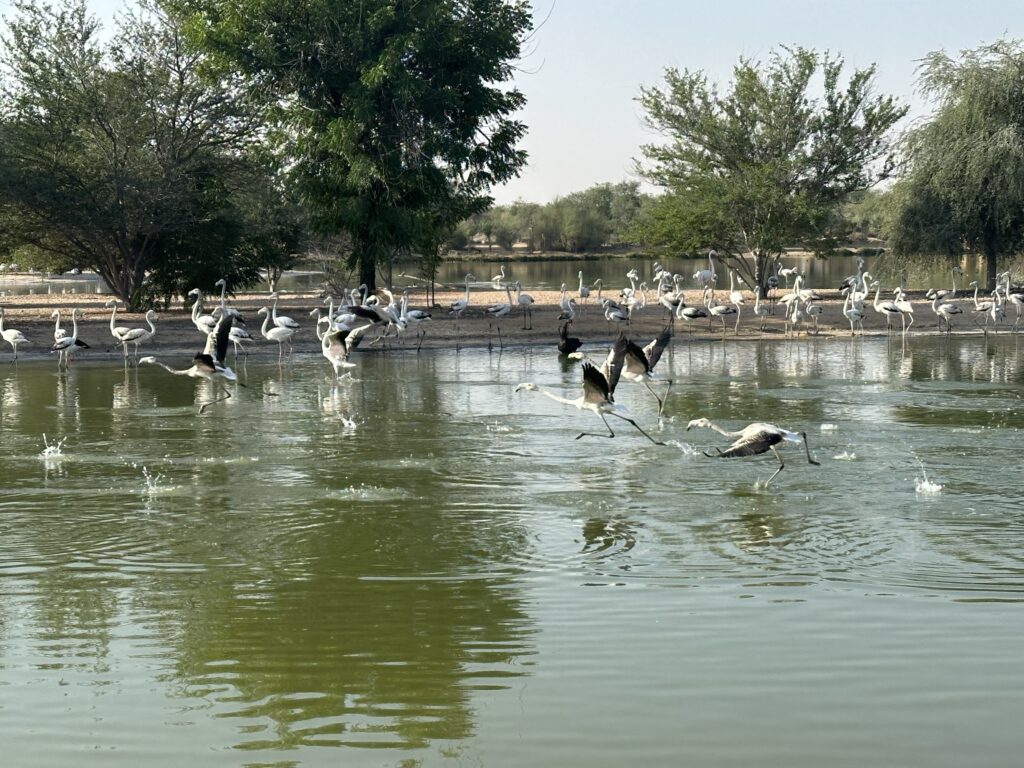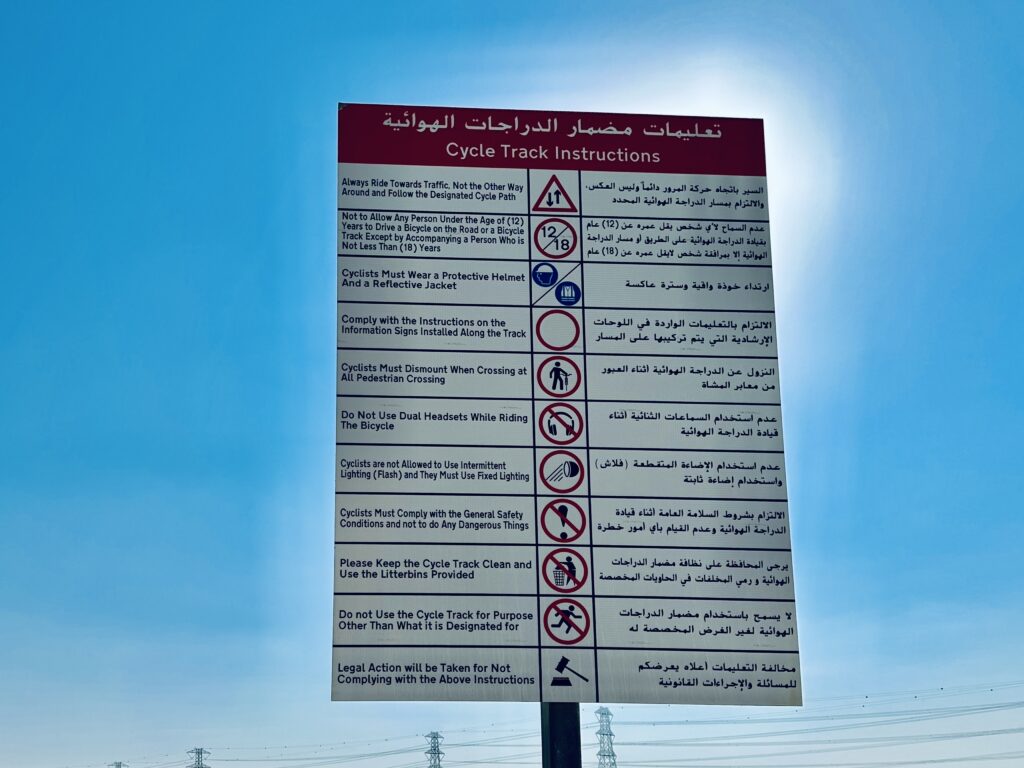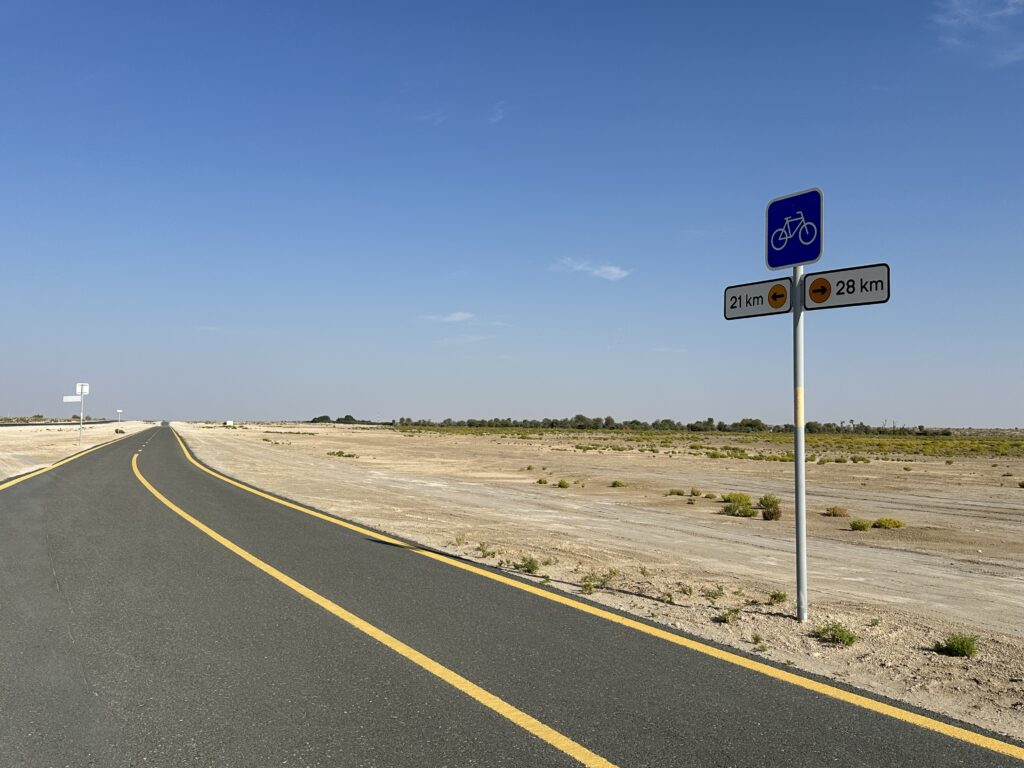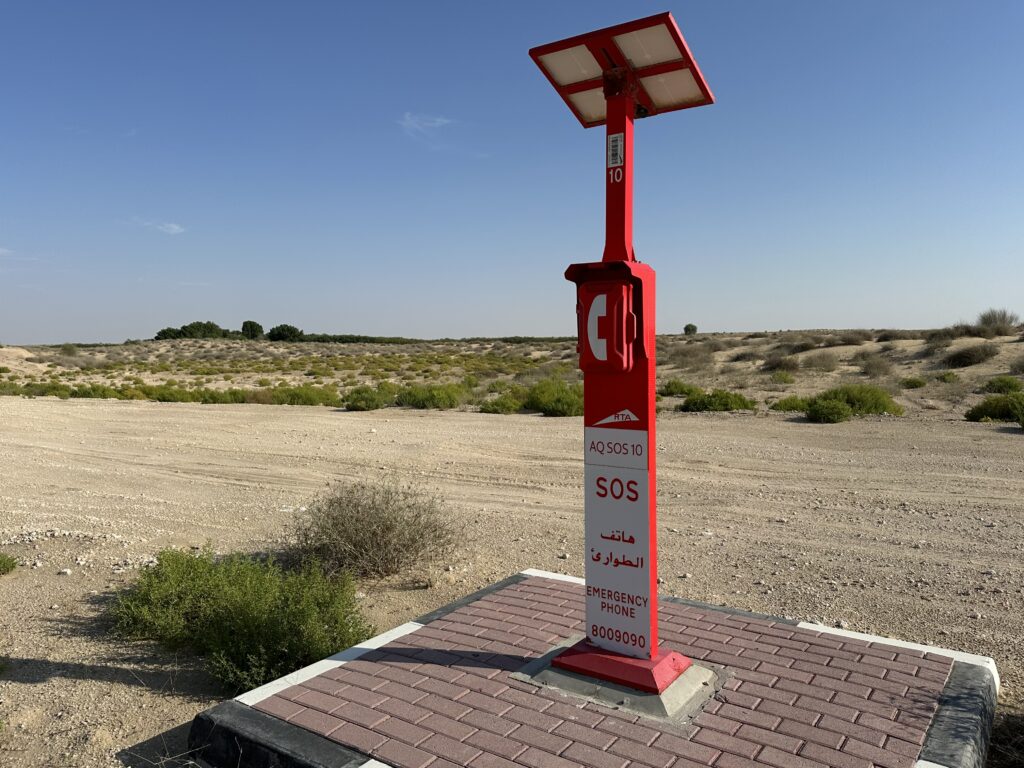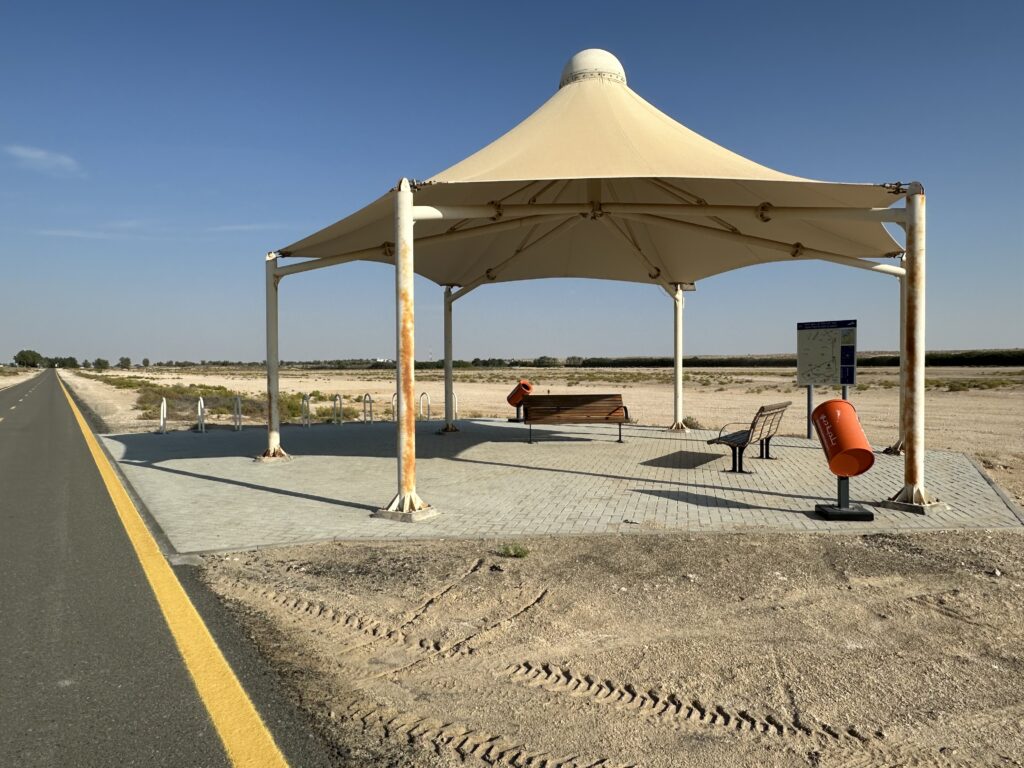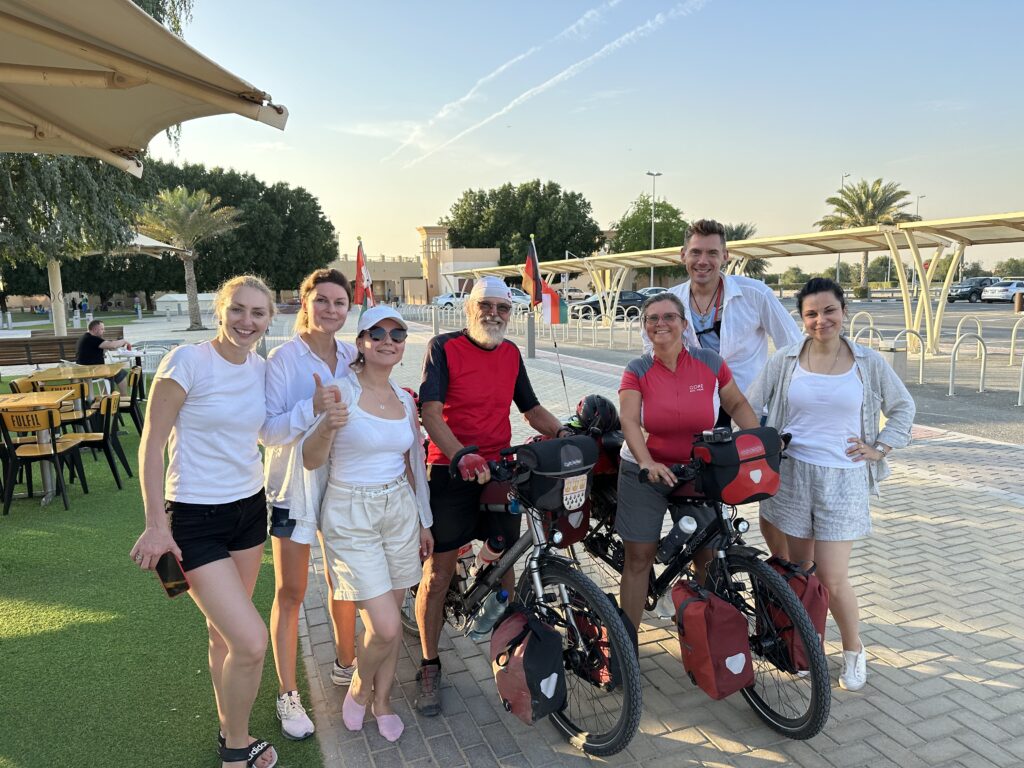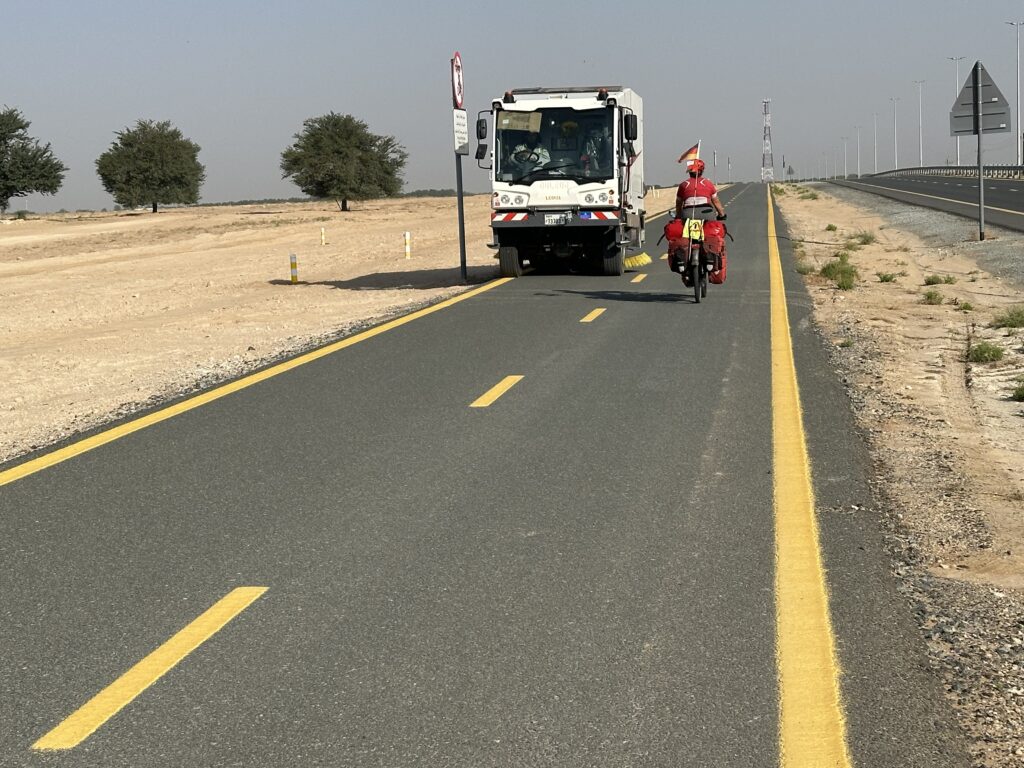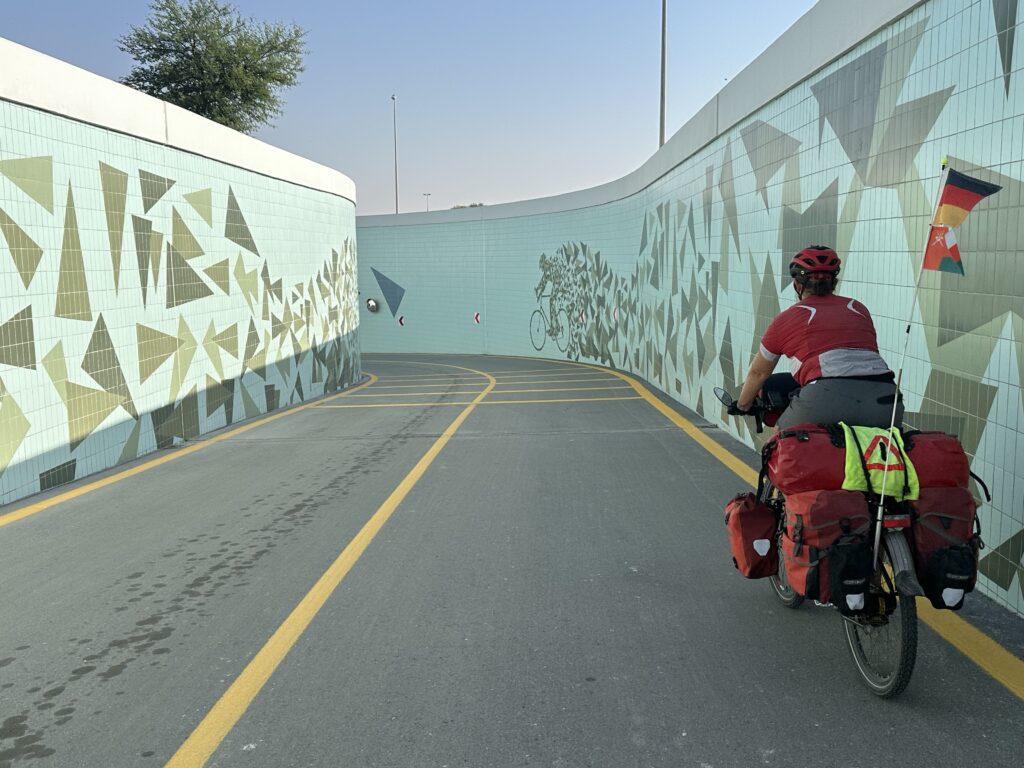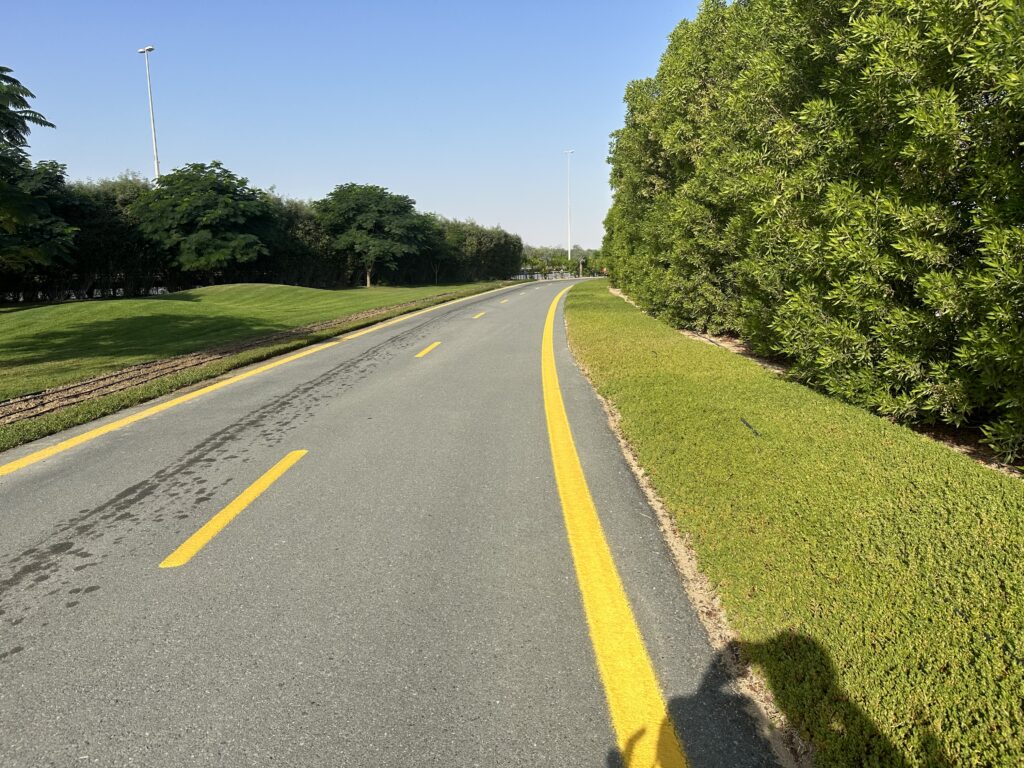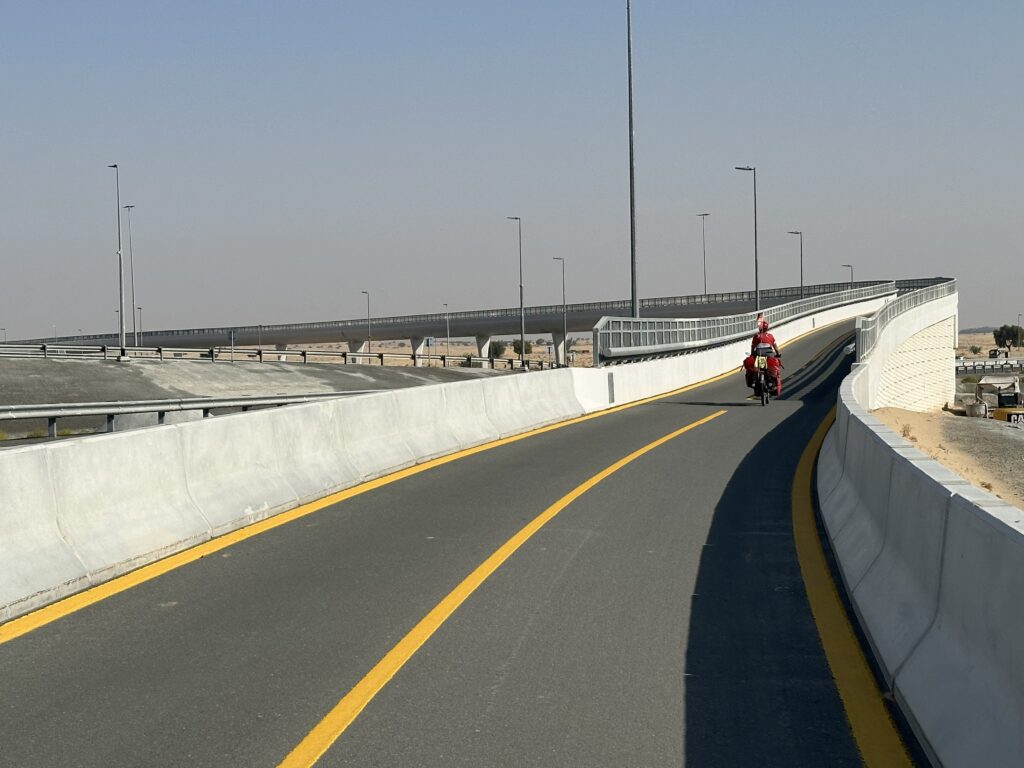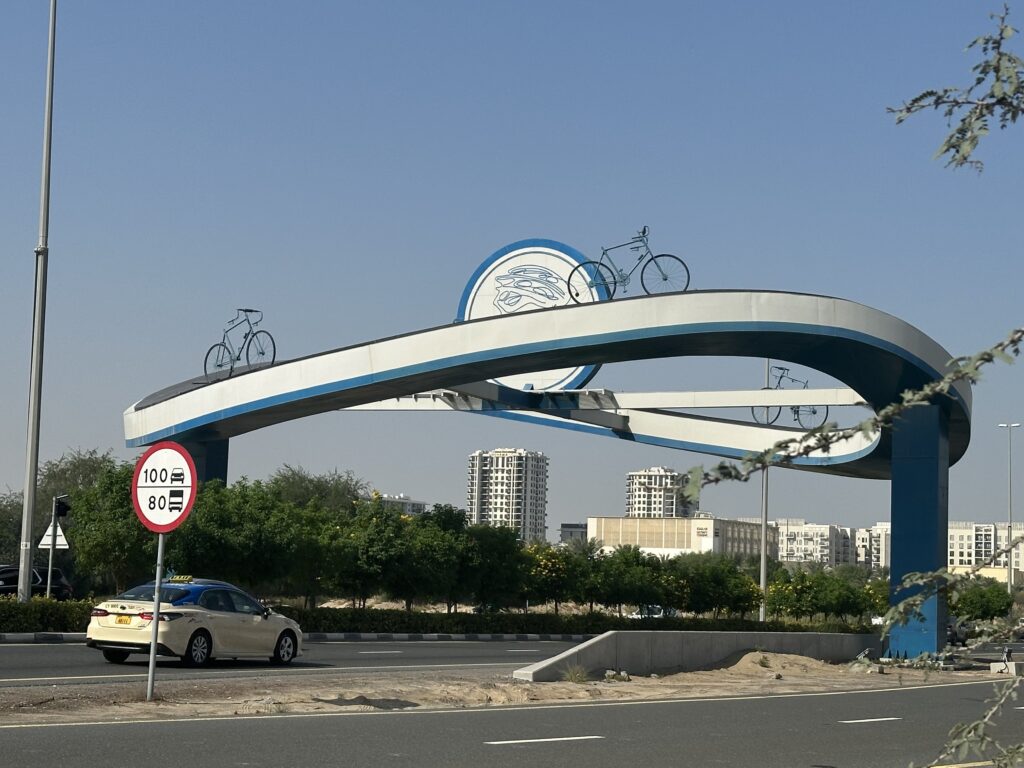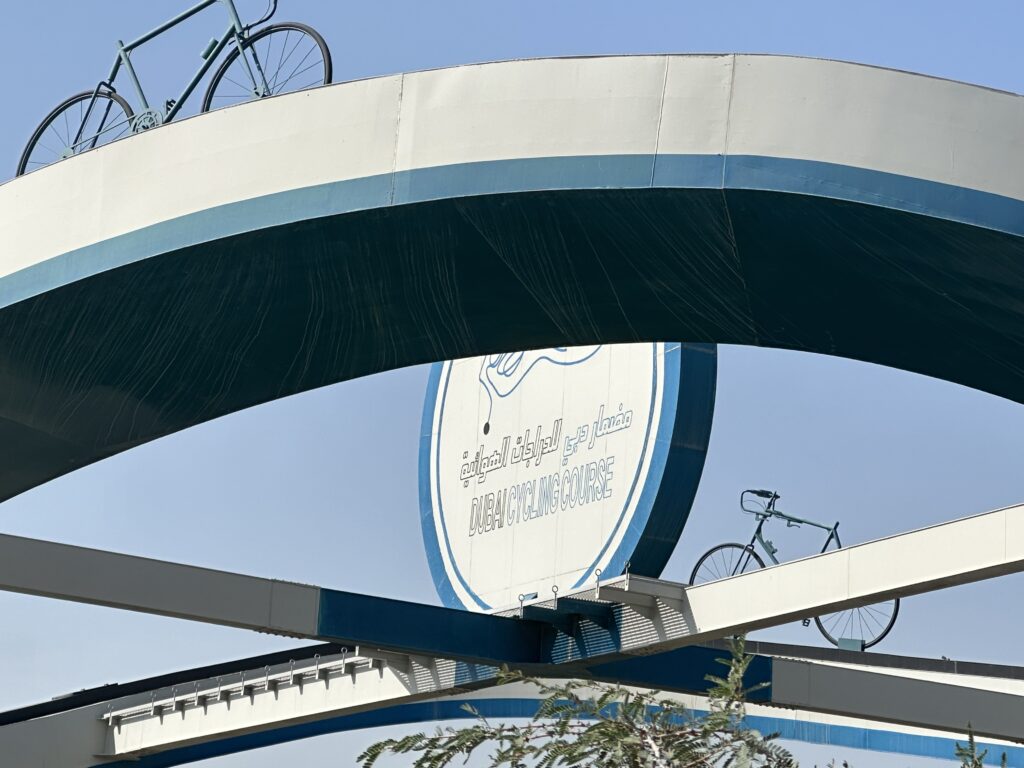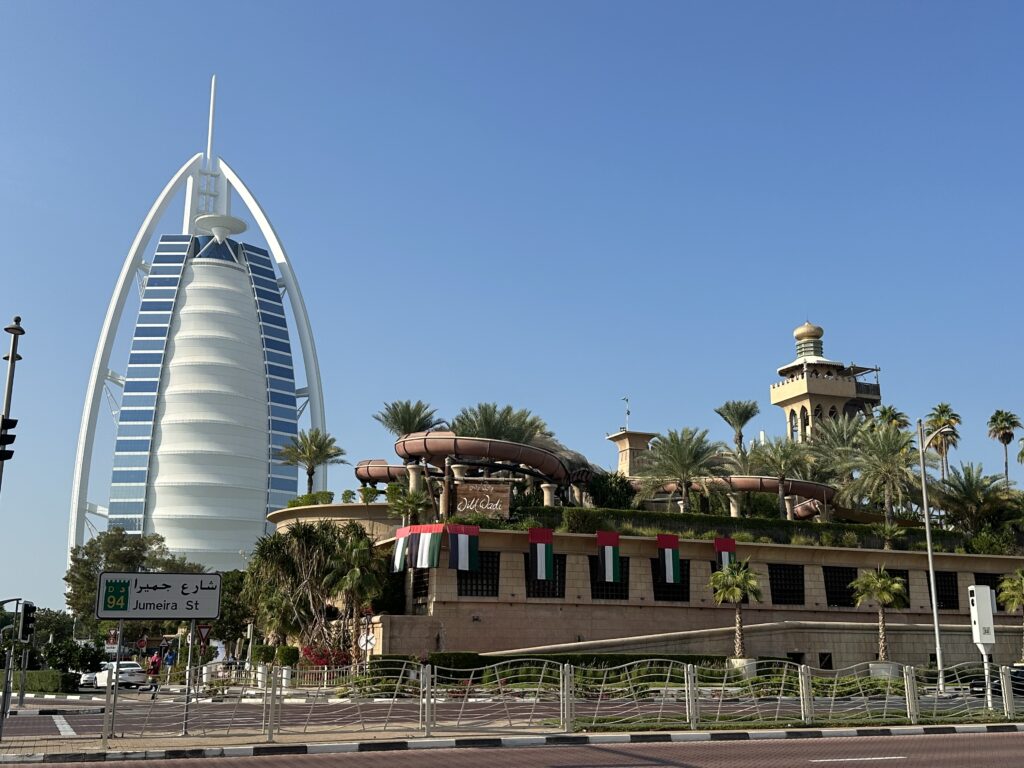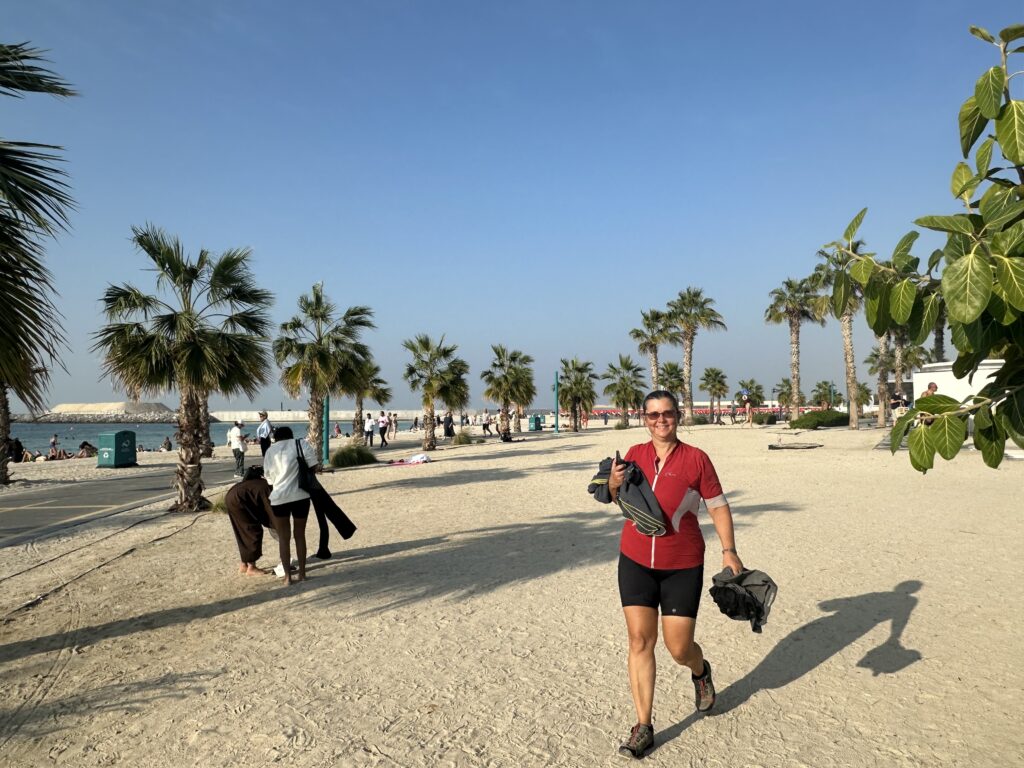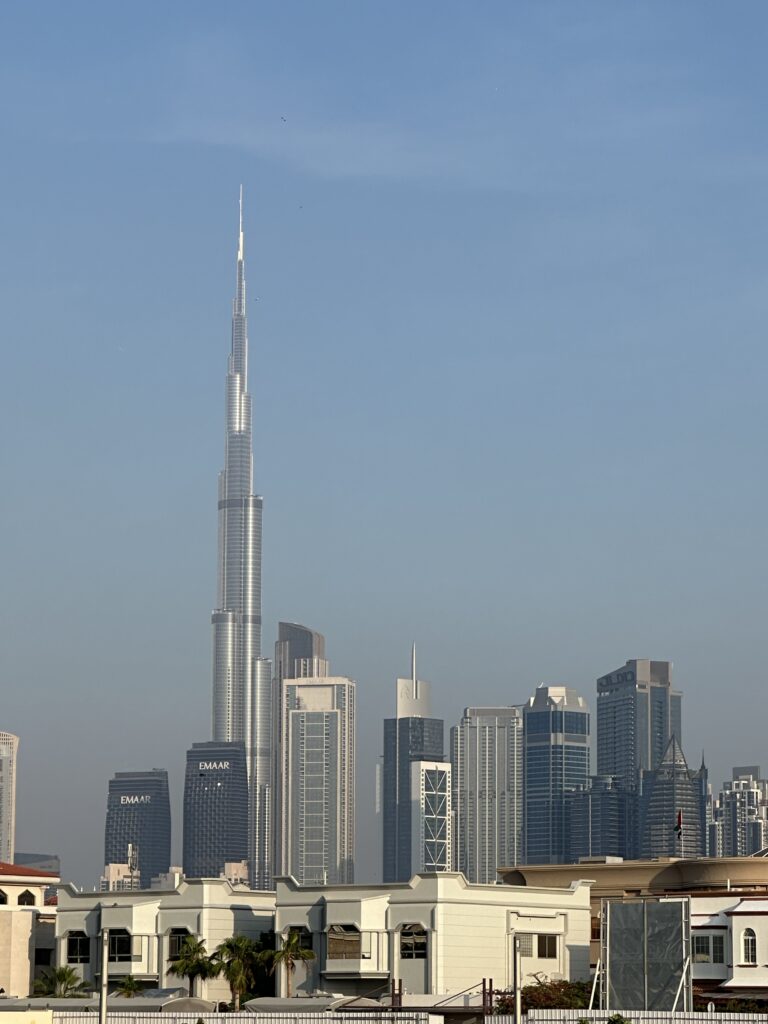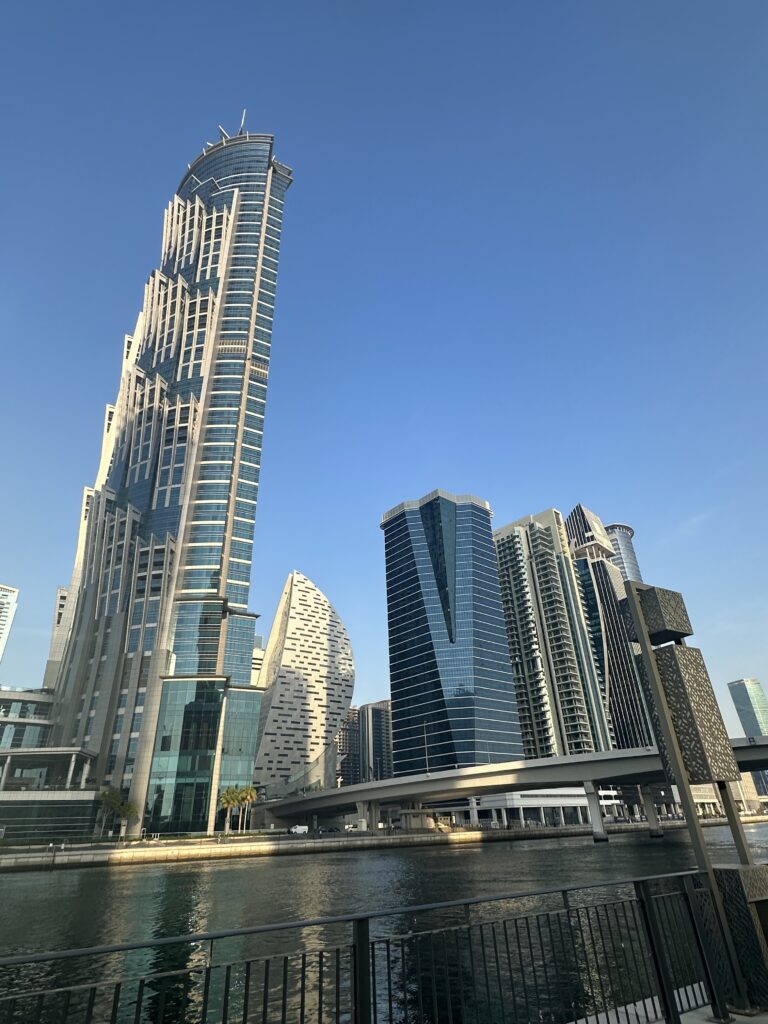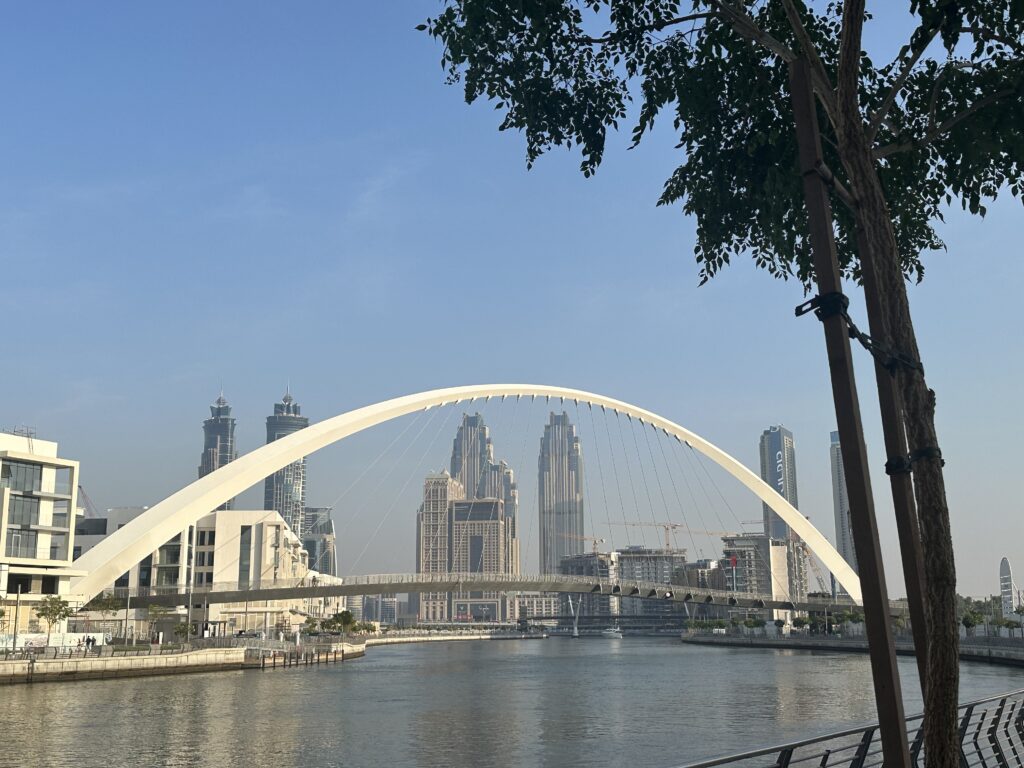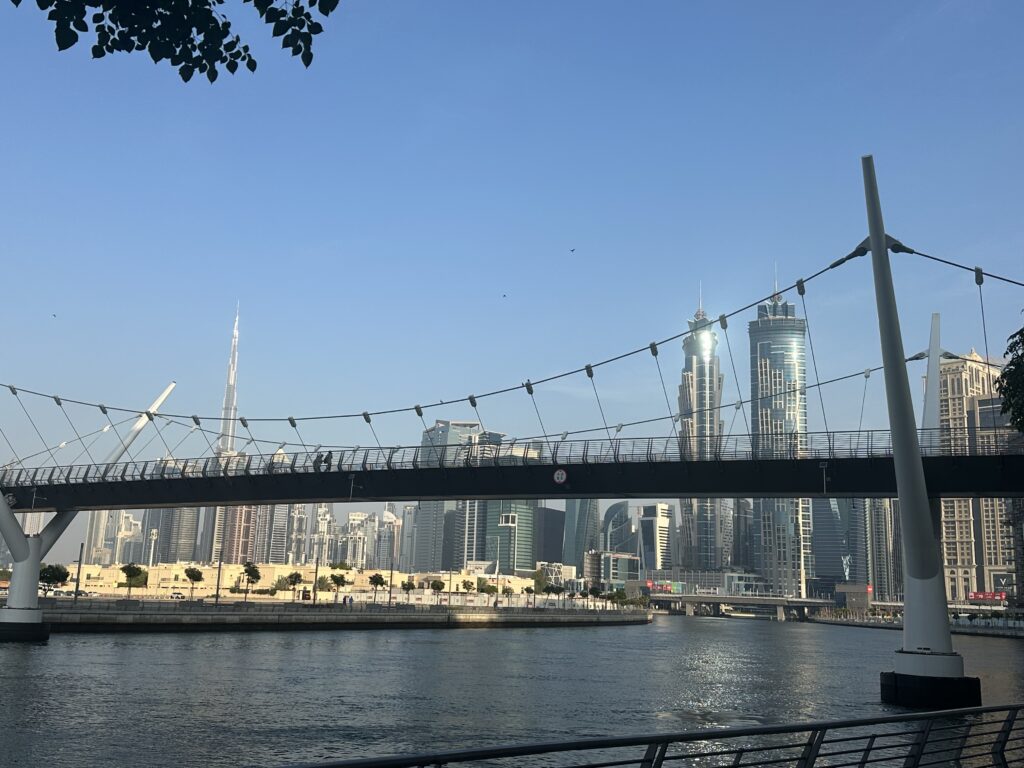15.11.-03.12.2023
Click photos for large size
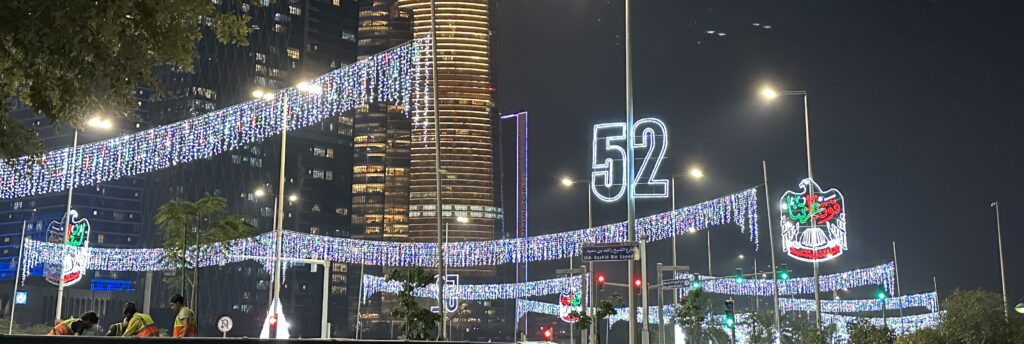
A strong wind whirls up the desert sand and it becomes clear why almost every man here wraps his kufiya, the patterned Arab scarf, tightly around his head so that only his eyes remain uncovered. However, every animal here at the camel market in Al Ain is critically and expertly inspected, assessed and valued. Countless camels of different breeds stand in the numerous enclosures, sometimes crowded together or even isolated, e.g. a mother camel with her baby camel.
We set off very early and travelled far out of the city by taxi, as trading starts there at six in the morning. Not only camels, but also sheep, goats and poultry are traded here and, in favourable cases, change hands. However, the scene is dominated by the activity in the centre of the camel enclosures.
New camels are delivered on pick-ups, those that have obviously been acquired are delivered with lifting cranes, tied up at the knees in a practice that is not very animal-friendly, and loaded onto lorry platforms for transport – whether to the slaughterhouse, the racing stable or the ‘Camel Beauty Salon’ is not clear to the uninformed observer like me. For the most part, these peaceful animals though calmly and almost lethargically endure this process.
The sales negotiation process is particularly interesting, although equally opaque. The haggling and the final agreement on the deal apparently follows a certain ritual, the individual steps of which are difficult to identify. In the end, however, the pride and satisfied smiles of the protagonists show that a good deal has been struck for both sides.
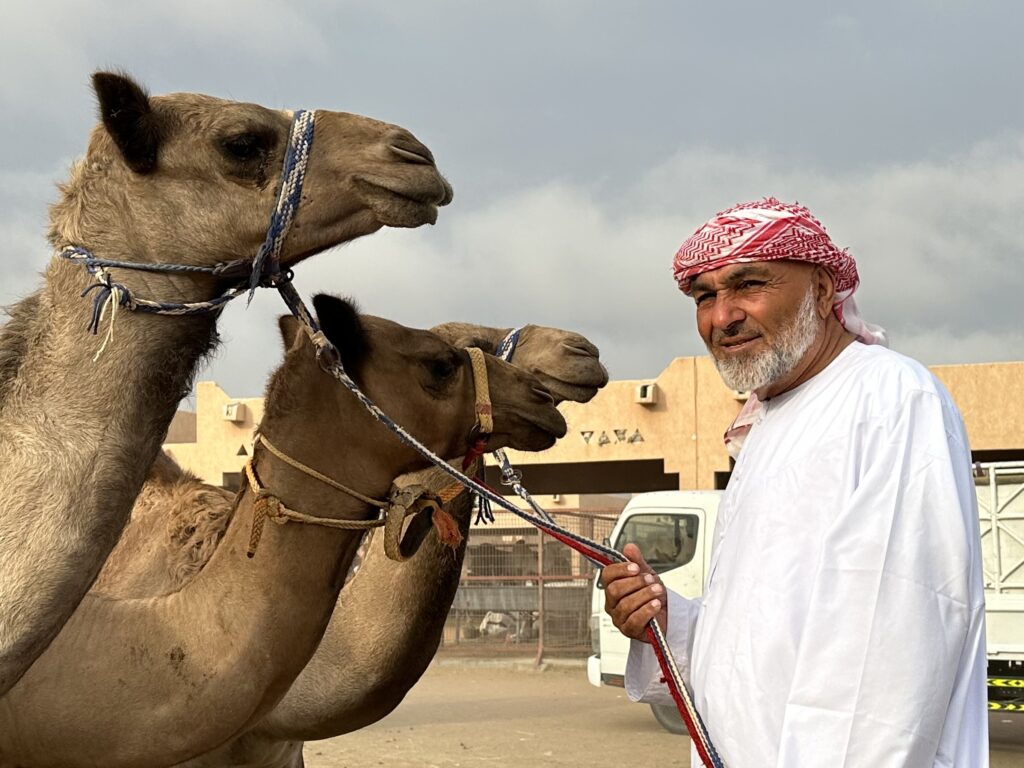
Al Ain, which we were only able to reach at the second attempt with quite a diversion via the only border town authorised for us European cyclists, Kathm-Al-Shiklah, has more to offer than just its ‘Cattle Market’. This oasis city, one of the world’s oldest and continuously populated sites, forms the heart of the Emirates, together with the Omani half of Buraimi, which is separated by a border. In addition to the imposing Al Jahilil and Al Muwaij forts, the Al Ain Oasis, with 21,000 palm trees and the very well-preserved building complex in the west of the city, is one of the smallest but also most beautiful in Al Ain.
This oasis was created from the end of the 19th century by Sheikh Zayid bin Khalifa I and his son Sheikh Khalifa bin Zayed A Nahyan and was expanded and embellished by successive generations and today has UNESCO World Heritage status. Its irrigation system is a testament to the engineering prowess of its era. Fortunately, it is located directly opposite our hotel, from where we explore the city a little before setting off in three desert stages on the road to Abu Dhabi, a journey with several special experiences:
- On the very first stage, during our usual snack break with coke and biscuits, we are invited by a distinguished older gentleman to choose more drinks and treats at his expense.
- The young Rashid, extremely eloquent and well-educated in English, intervenes in this process and invites us to his father’s feudal estate, the centre of the obviously very wealthy and large family with six sons. The hospitality arranged by the elegant lady of the house with dates, fresh fruit, coffee, tea, pastries, cultivated small talk and finally a delicious lunch is followed by a presentation of the thoroughly impressive attributes of wealth, the status symbols common in the Arab world: the extensive fleet of powerful SUVs, a rare vintage Mercedes coupé, an aviary with exotic birds and finally a particularly beautiful white falcon, a gift from the president to his father. And of course there is a herd of cattle, camels and racehorses.
- The journey, which we deliberately do not take on the hard shoulder of Highway 30, but preferably on the partly parallel ‘Service Road’, takes us through magnificent sand dune landscapes as well as deserted sections with endless plantations. But there are also longer stretches of gravel with the notorious corrugated iron profile to contend with. On the second stage we lose the last of our energy on a six-kilometre sandy section through the Khatim Desert, so that we are completely exhausted when we pitch our tent right after that behind a mosque and petrol station.
- The entrance to Abu Dhabi, whose skyline is already impressive from afar, is significantly impaired by huge roadworks that our GPS app does not yet recognise. The alternative route given to us by the head of construction site safety, who emphatically directs us away from the roads that are completed but not yet open, leads to a significant extension of the day’s stage, which we are nevertheless able to finish early in the afternoon thanks to a favourable wind.
- When we arrive at the Airbnb accommodation we have booked, we find a deep-sleeping resident, who I rouse from his slumber quite rudely out of disappointment at the unavailability of the longed-for immediate shower. After soothing his understandable annoyance, we both quickly realise that an organisational error by the landlord has led to this embarrassing situation. Fortunately, we are given even nicer alternative accommodation with a fantastic view.
Our stay in Abu Dhabi also begins with some extraordinary experiences, as it is a great coincidence that we meet up with a good friend from our time together at work and with Peter Richter, a well-known long-distance trekking cyclist, who reaches Abu Dhabi almost at the same time as us on his 4-5 year trip.
Our stay in this fast-growing capital of the Emirates ends with a sightseeing cycle tour. It seems that Abu Dhabi is trying to compete with Dubai in terms of architectural and infrastructural superlatives, but this is only partially successful and there is still a lot of catching up to do. However, what we have seen and experienced is enough to take our breath away with the modernity, dynamism and wealth of this metropolis, in contrast to the sparsely populated and sometimes hostile regions we have travelled to so far, with their barren deserts and wild mountain regions, poor fishing and mountain villages and historic towns and castles.
Following the tips of our Abu Dhabi friends, we decide on two exclusive locations to celebrate my birthday: we have an aperitif in the bar of what is probably the best hotel in the world, the Emirates Palace Hotel, where the bar crew even serenade me with a beautiful piece of cake. And for dinner, Astrid invites me to ‘Li Beirut’, supposedly the hottest Lebanese restaurant in the Emirates, where I am also celebrated with a serenade and cake. The latter was to have its consequences.

For the onward journey to Dubai, we decide to take a slightly longer desert route instead of the shorter coastal route, which would take us mainly through densely populated areas characterised by motorised traffic. So after a relaxing break in Abu Dhabi, we get back on our bikes, pass the Formula1 circuit, which is roaring with the sound of the ongoing race and a group of road cyclists with bike-worldtourer Michael Evertz, who joined for a pilgrimage trip to the World Climate Conference. After the second stage, we reach the idyllic Flamingo Lake in the Qudra Desert, which is criss-crossed by large plantations. It is part of an ensemble of artificially created fresh and salt water lakes in an oasis, which is lavishly designed and maintained as an excursion and bird conservation resort.
The detour through the merciless desert heat is quite arduous, but well worth the effort. However, we quickly overcome the shock when we arrive there that, contrary to the information we had received in advance, camping is prohibited at the resort by deciding to simply ignore the ban and, after dark, we discreetly set up camp under two desert acacia bushes on the lakeshore without any of the officials taking offence.
We cycle about a third of this route and most of the last stage, which takes us into the city of Dubai, on the magnificent and sometimes almost lavishly laid out Dubai Cycling Course. On the way towards Dubai, we encounter many racing cyclists who, almost without exception, greet us in a friendly manner and pay us recognisably respect.
We reach the coast below the Burj Arab and the marvellous, extremely well-kept, spacious Jumeirah Beach, which is used by many tourists and ex-pats with a freedom of movement that is unusual for Arab countries. We can’t resist the temptation of a refreshing dip and so delay our arrival at our accommodation for the days until our flight home by taking a long dip in the Persian Gulf.
On the way there, we can’t help but marvel at the architectural superlatives and the multitude of almost iconic buildings, bridges and complexes. At the end of the millennium, the last time I visited this up-and-coming metropolis, Dubai still consisted of skyscrapers essentially lined up along one main axis, the Burj Arab stood like a solitaire in the open and Business Bay was more of a cosy entertainment district. How much this has changed in just a quarter of a century!

With our bicycles, we reluctantly navigate our way through the skyscraper canyons to the Airbnb flat we have booked, taking lots of photo stops along the way. Once there and settled in, organising the packing and transfer of our bikes for the flight to Germany is our top priority and is fortunately completed quickly and successfully, so that we can now look forward to the sights of Dubai, the generous invitation of an old good business friend and the events on the 52nd anniversary of the founding of the United Emirates on 02. December, one day before our departure as an impressive farewell.

